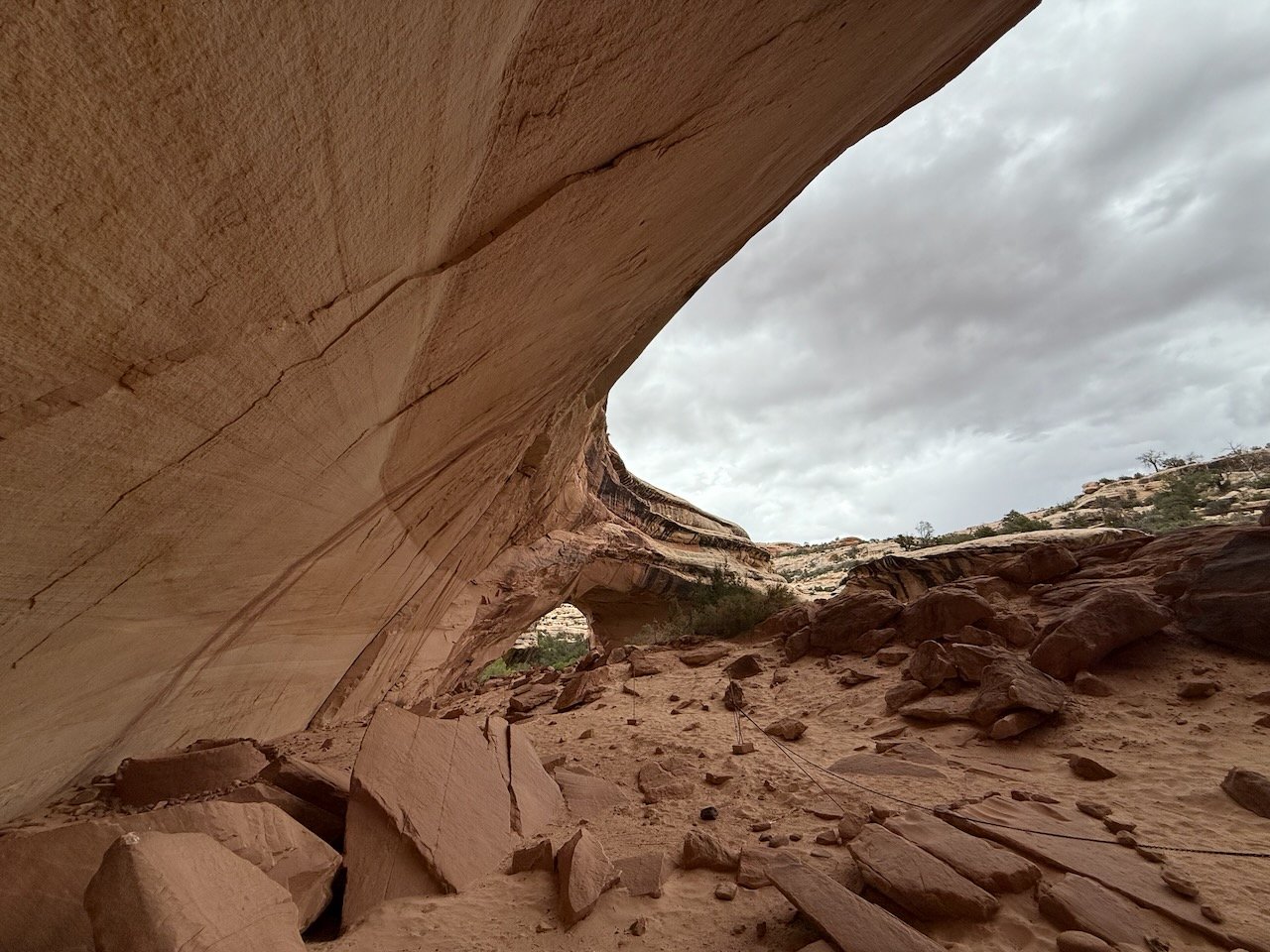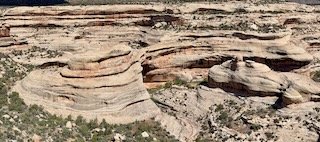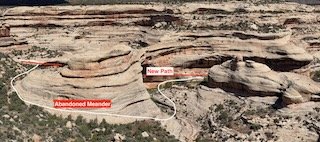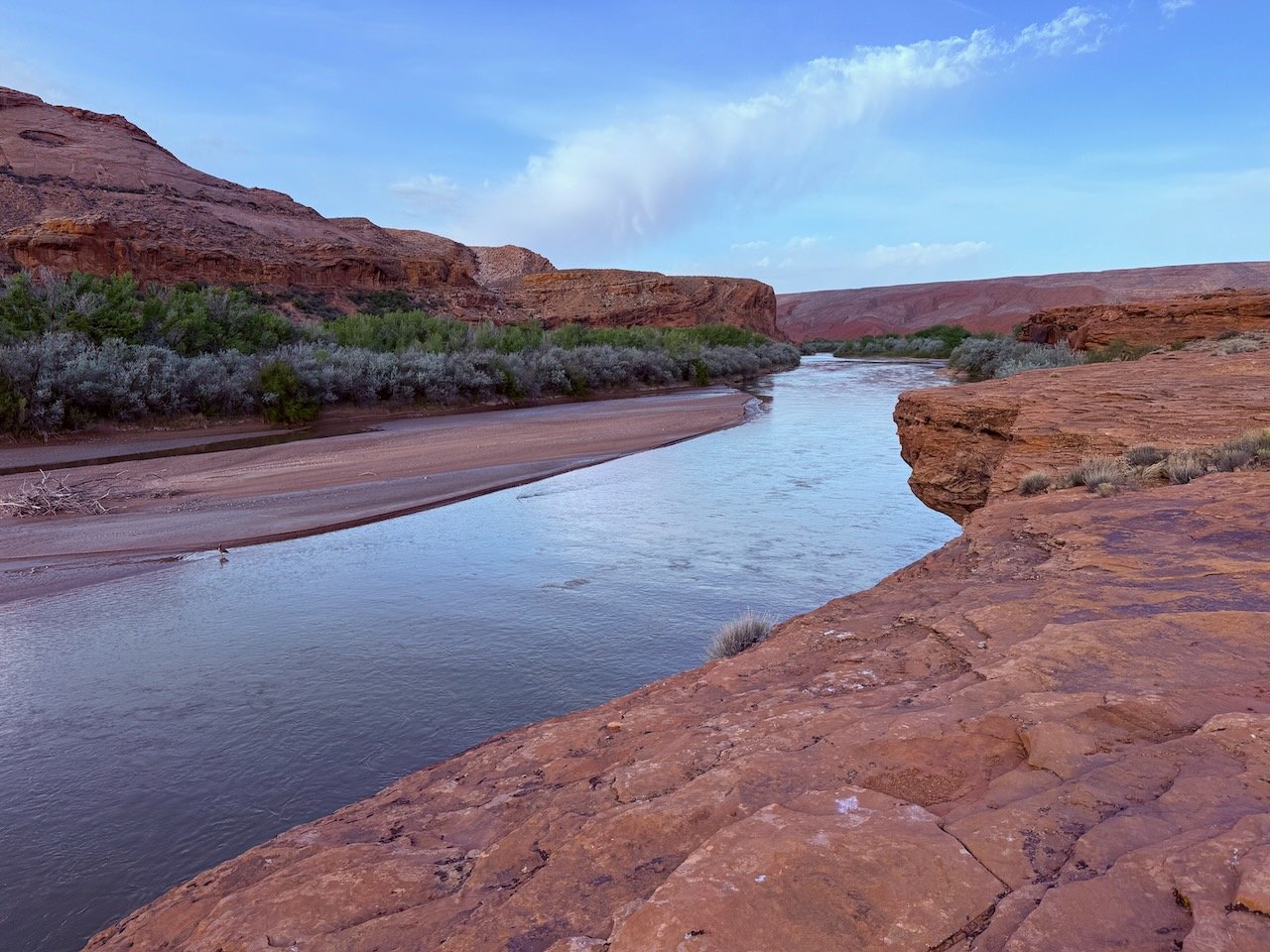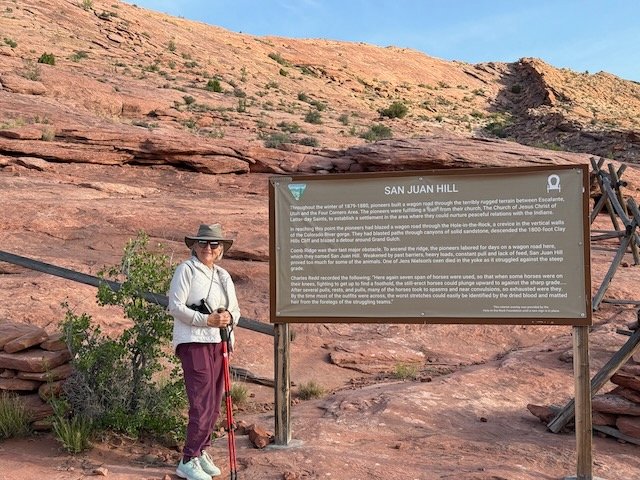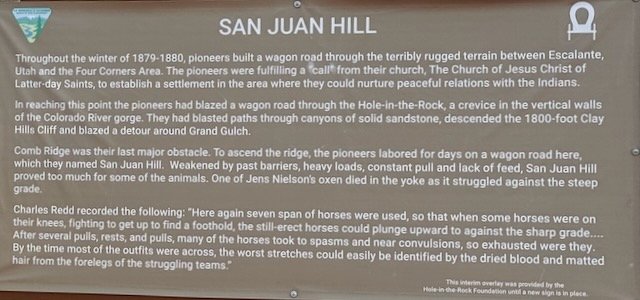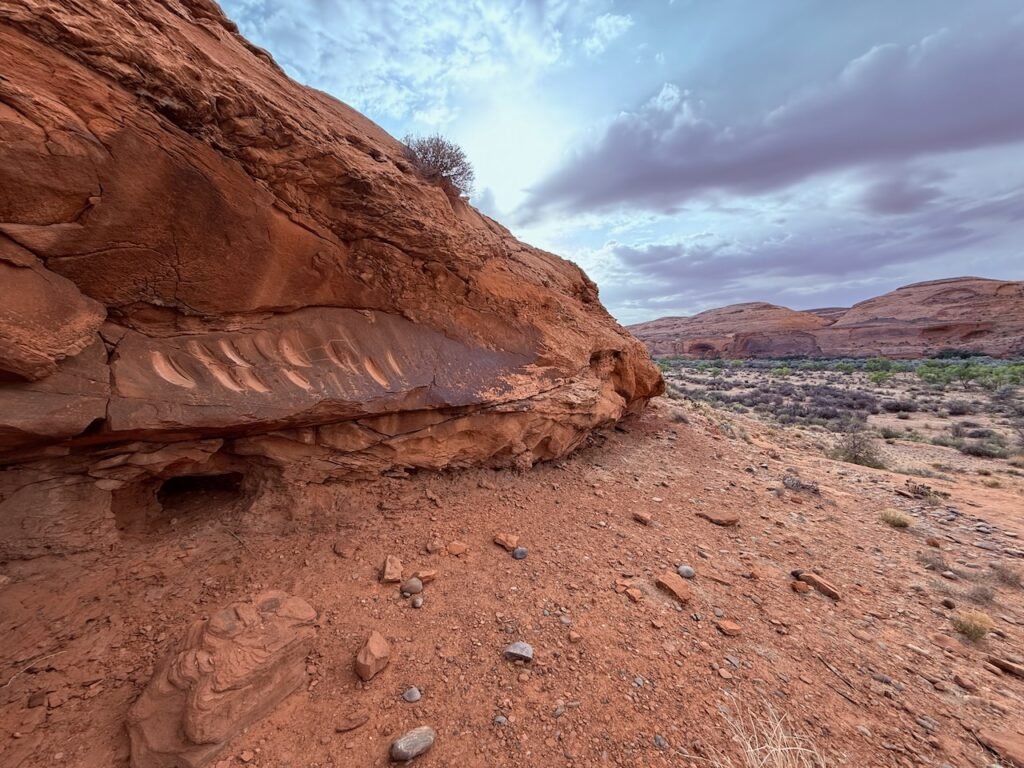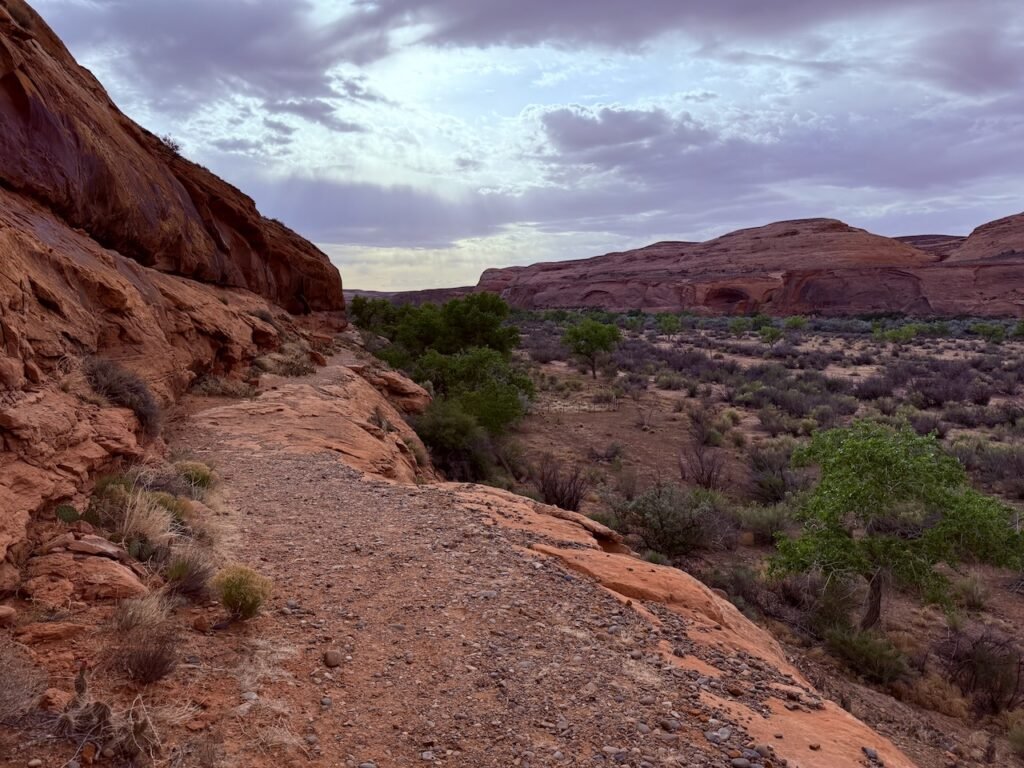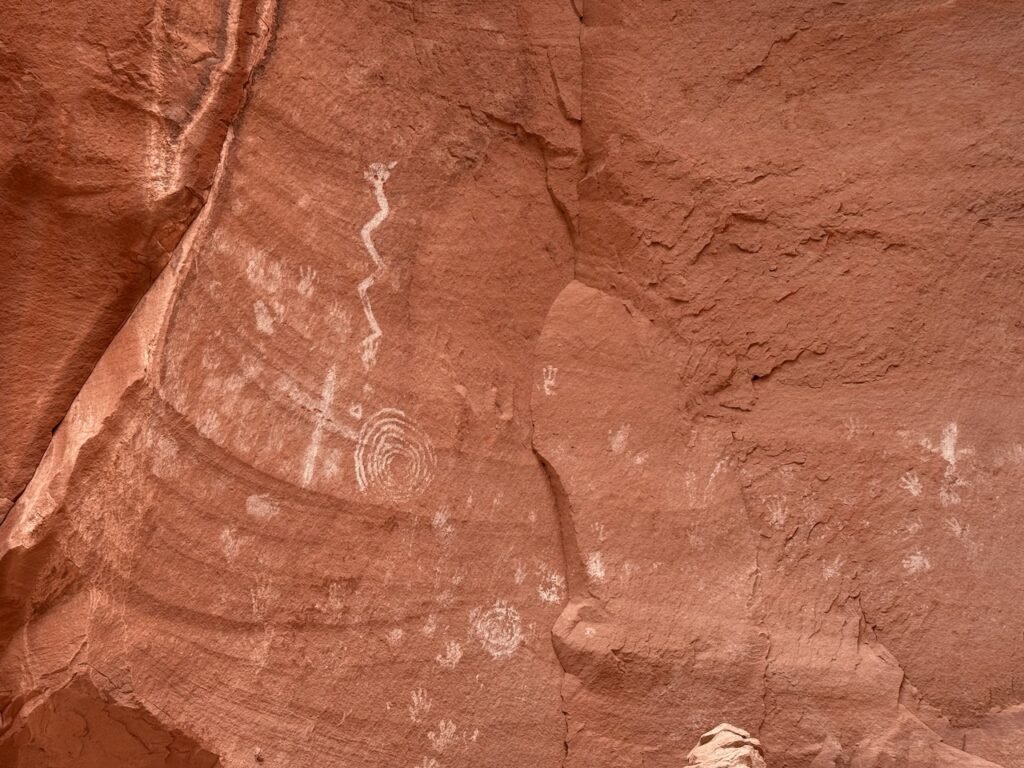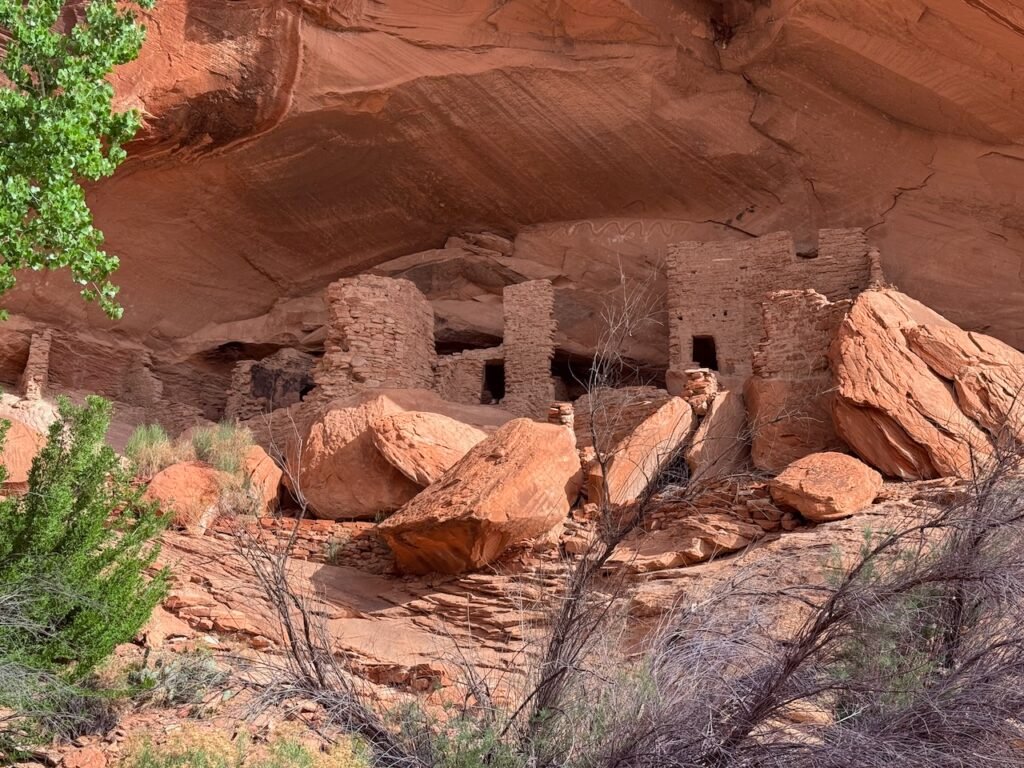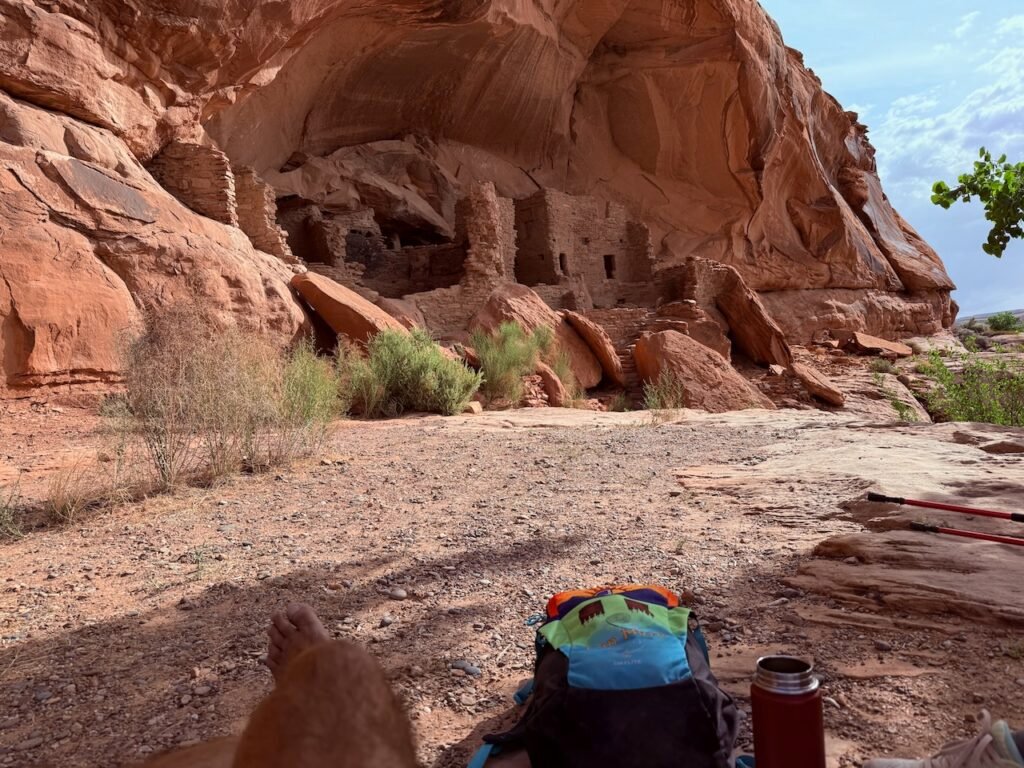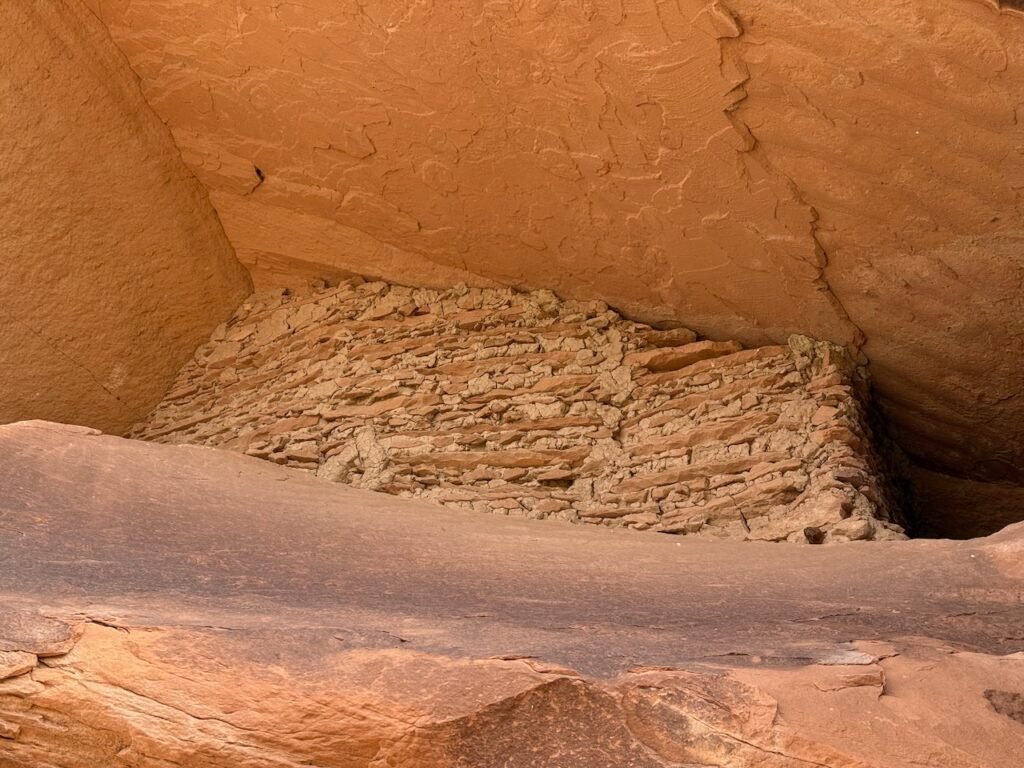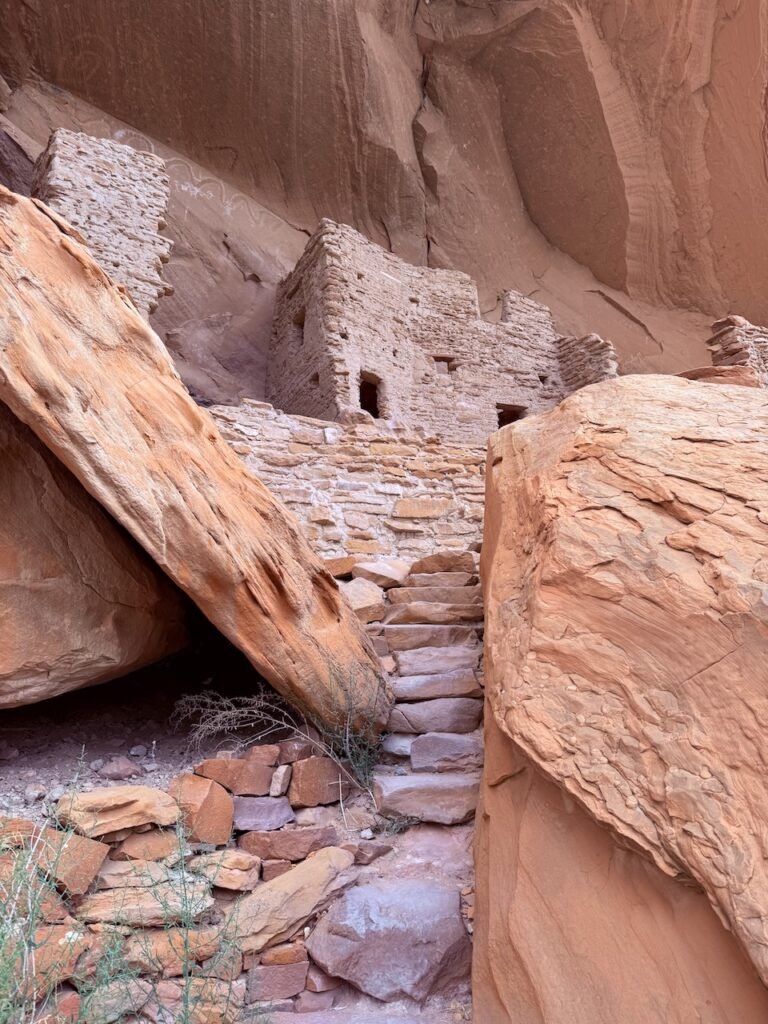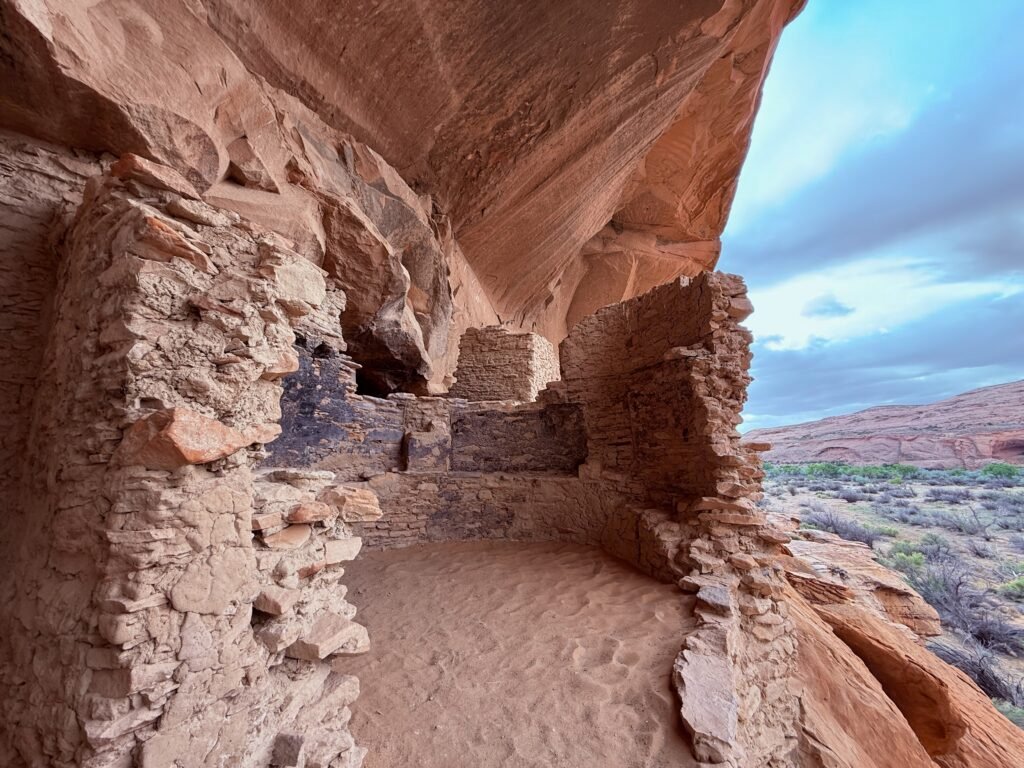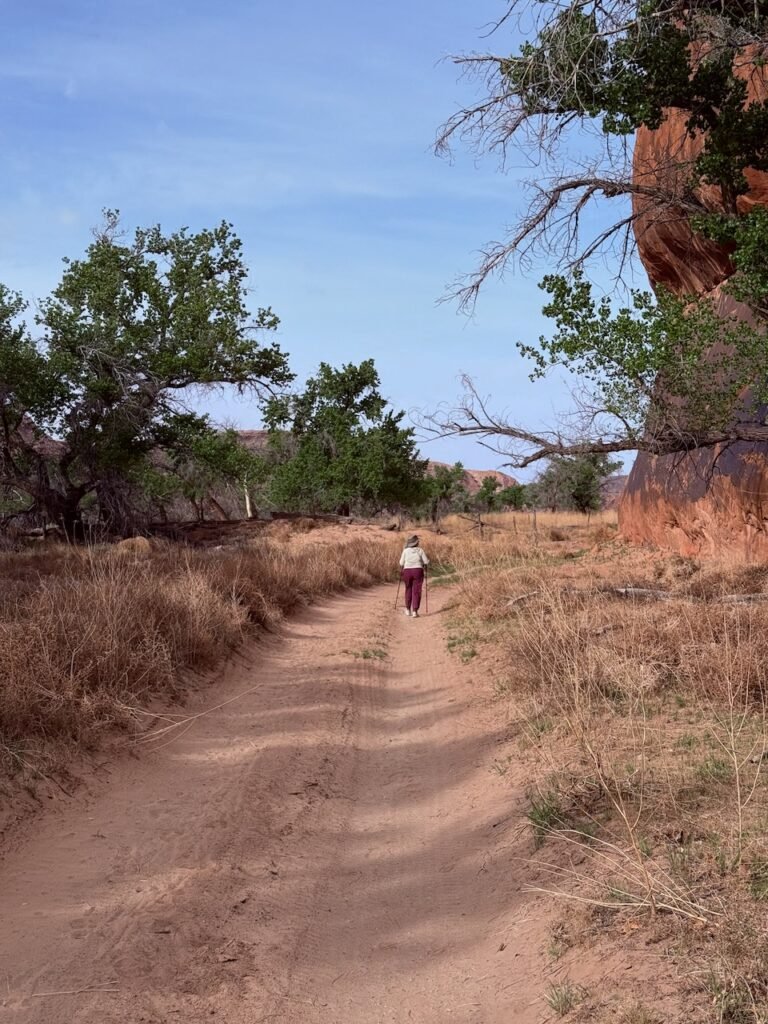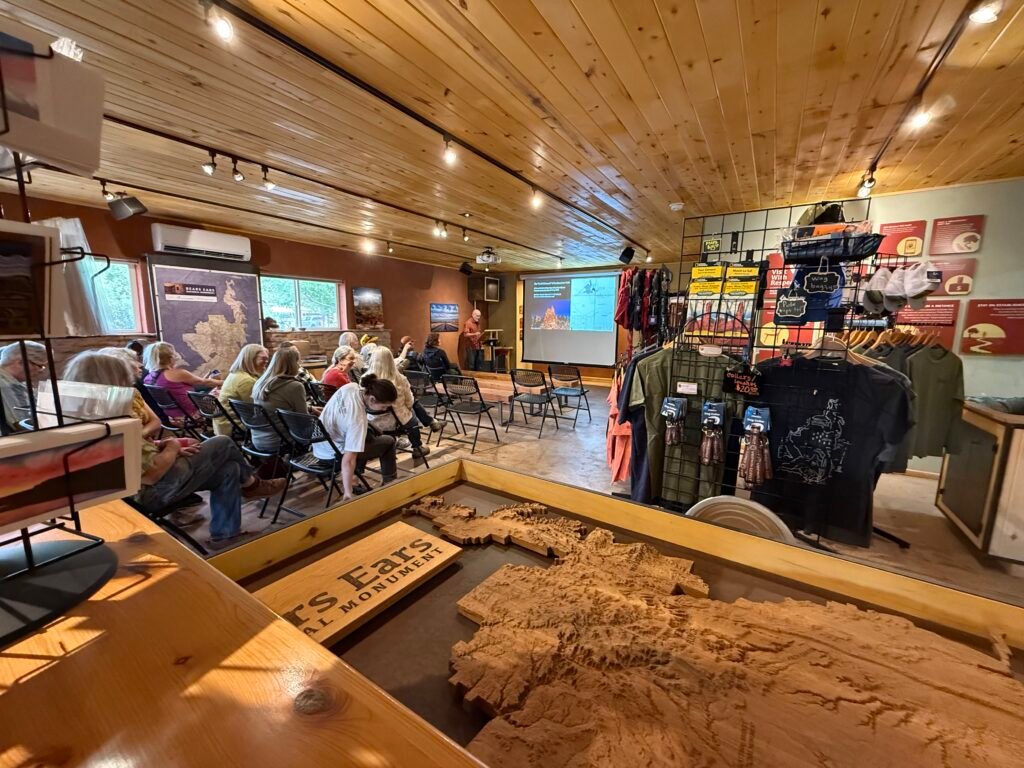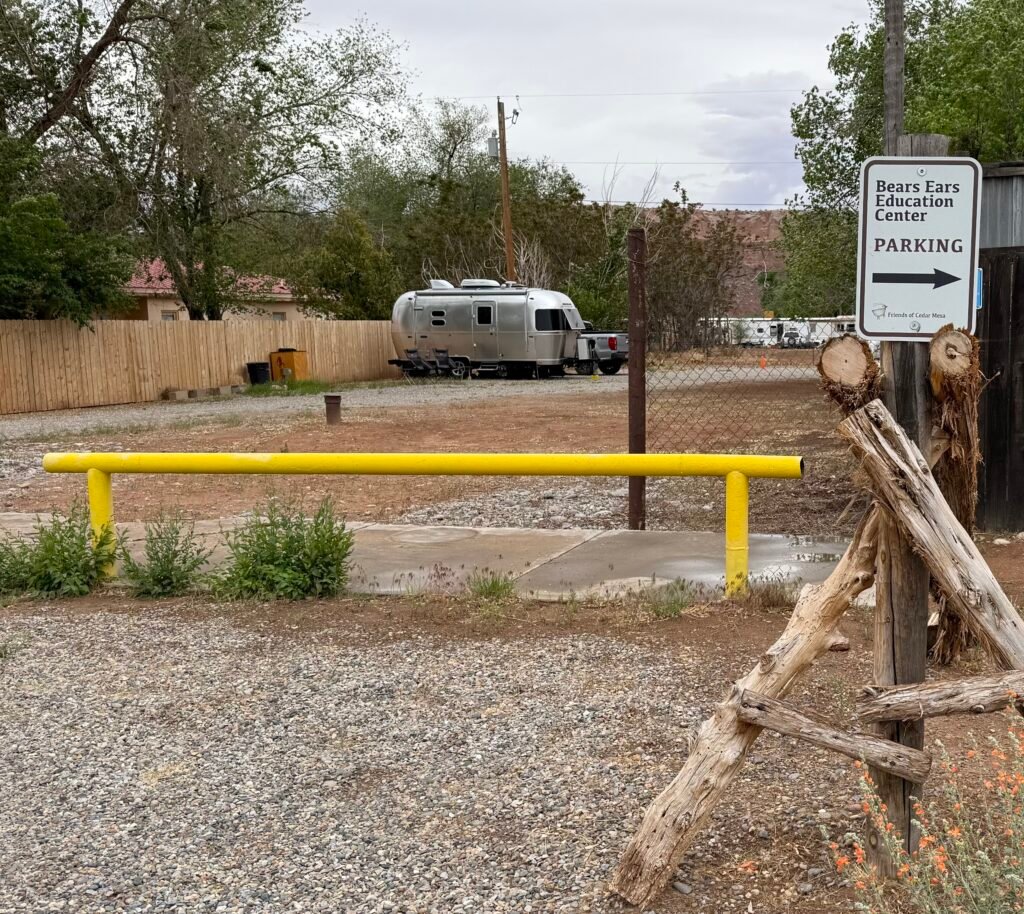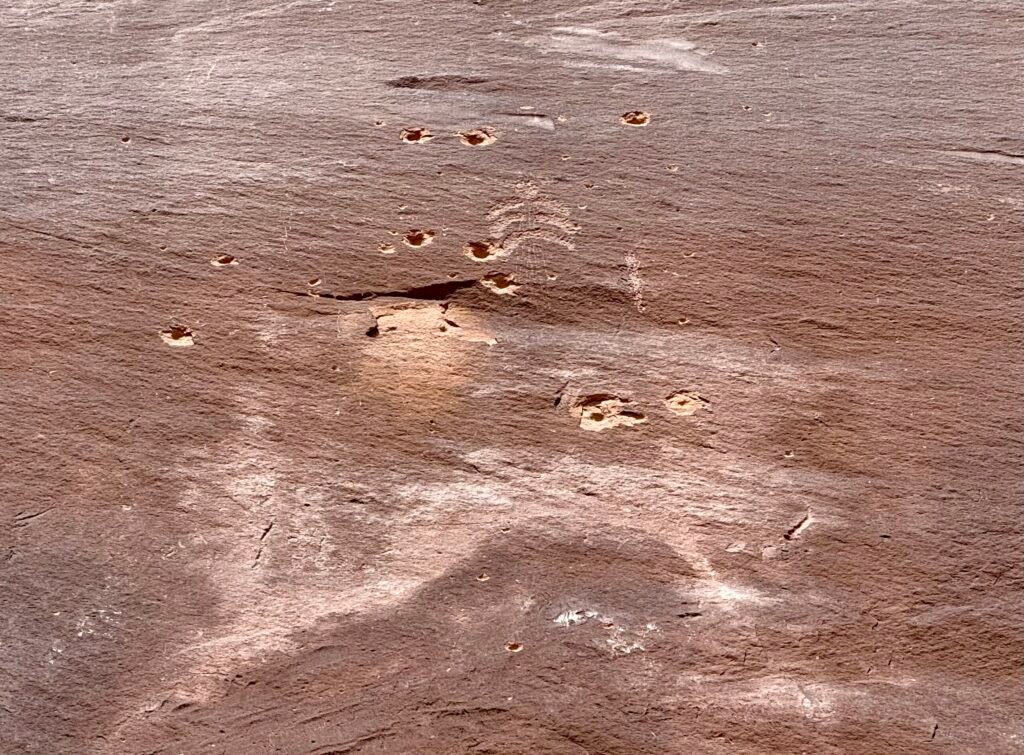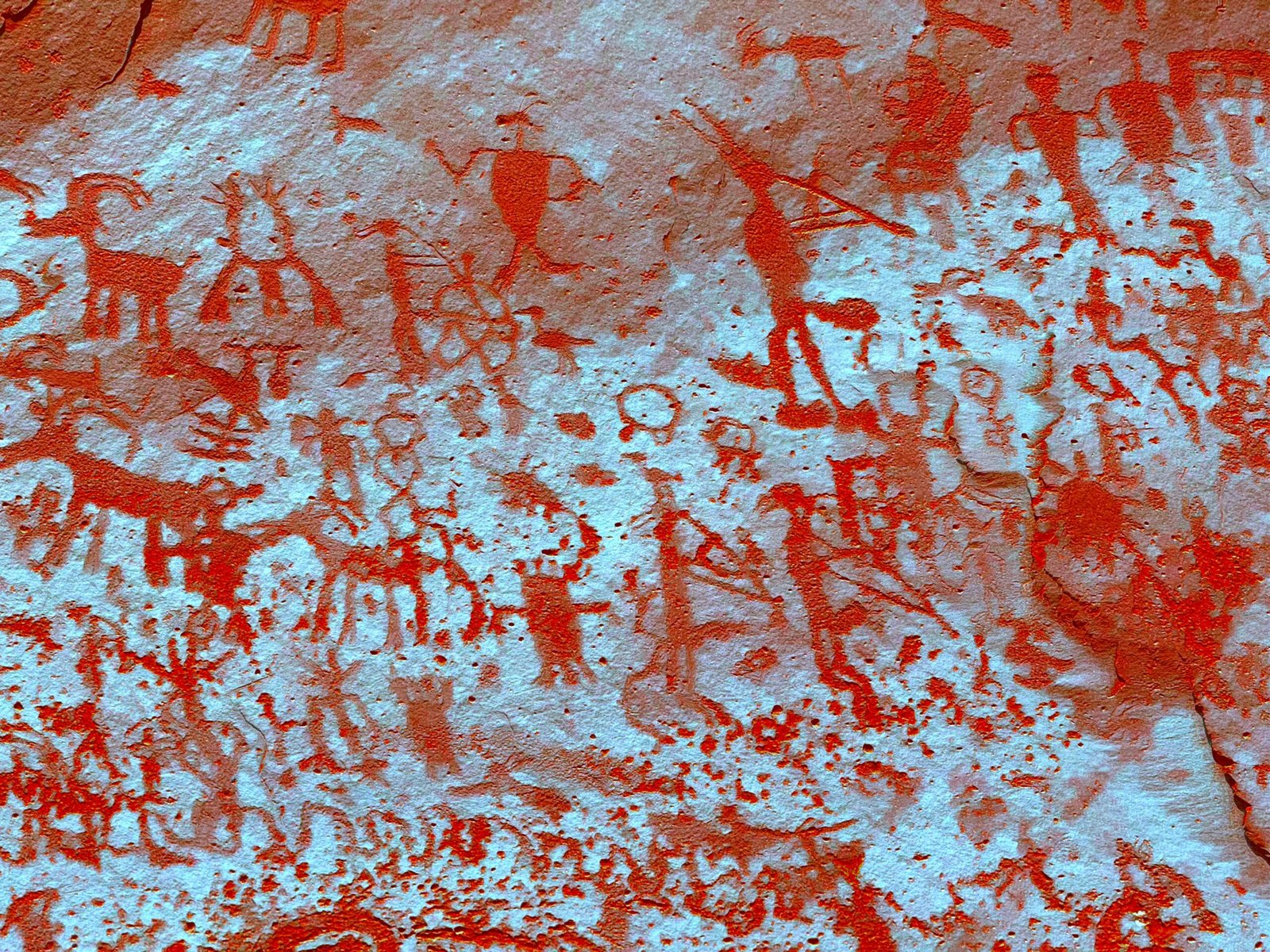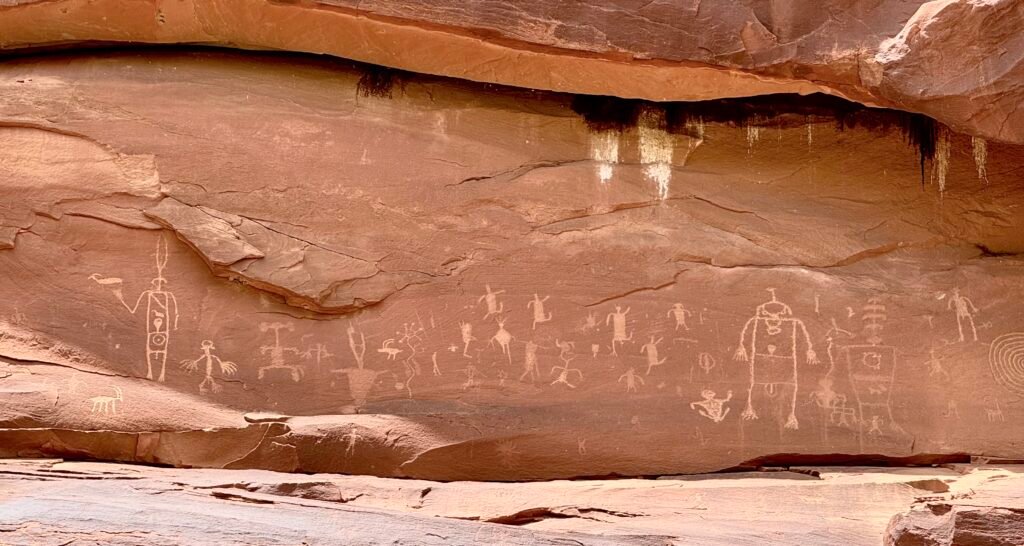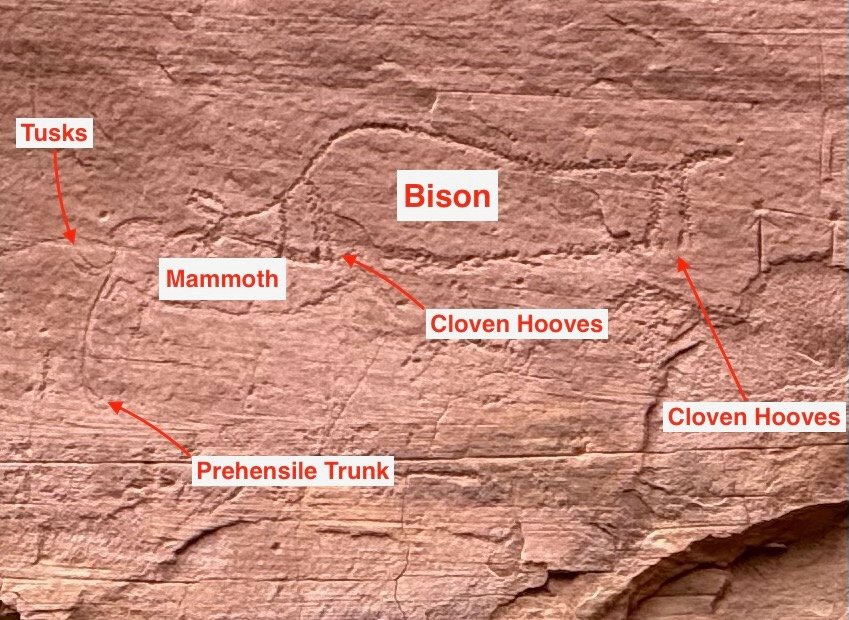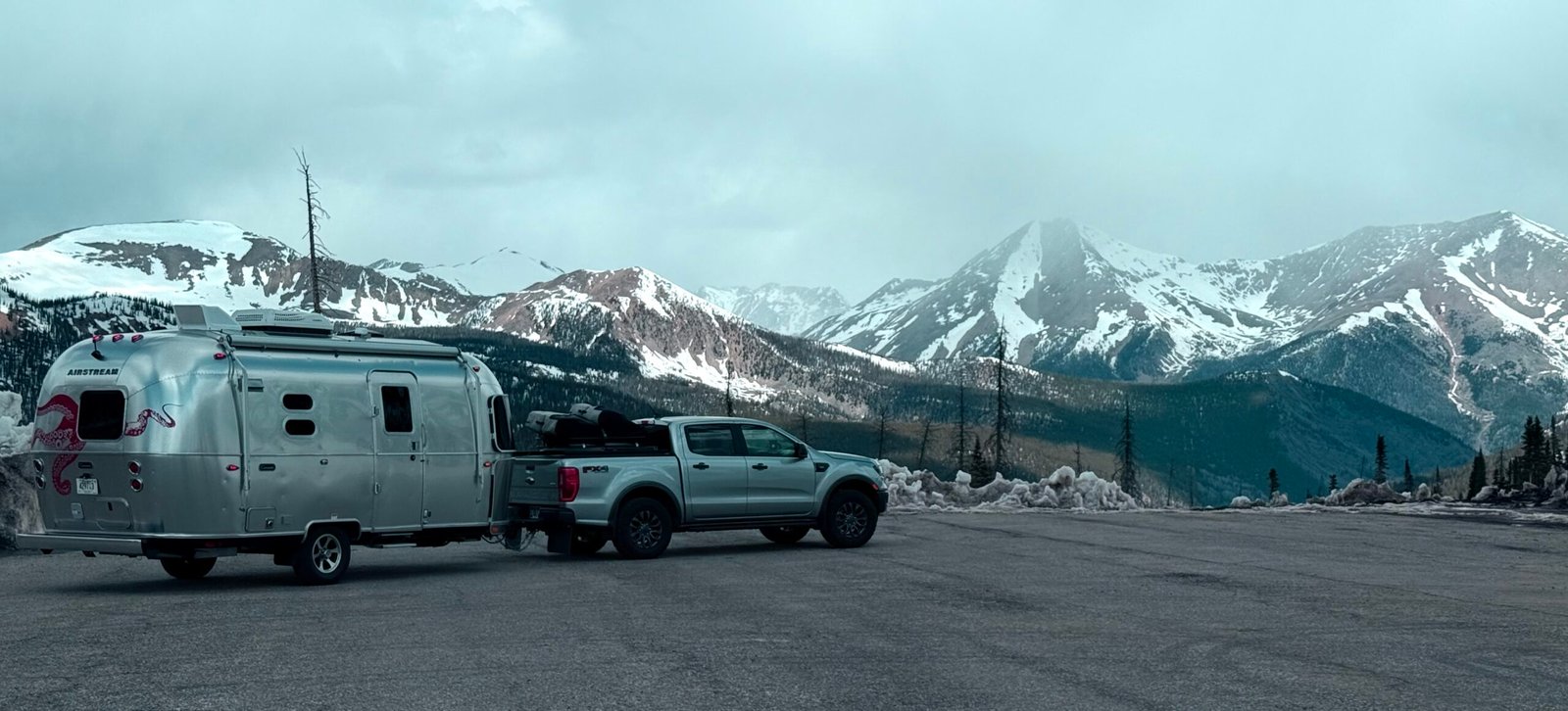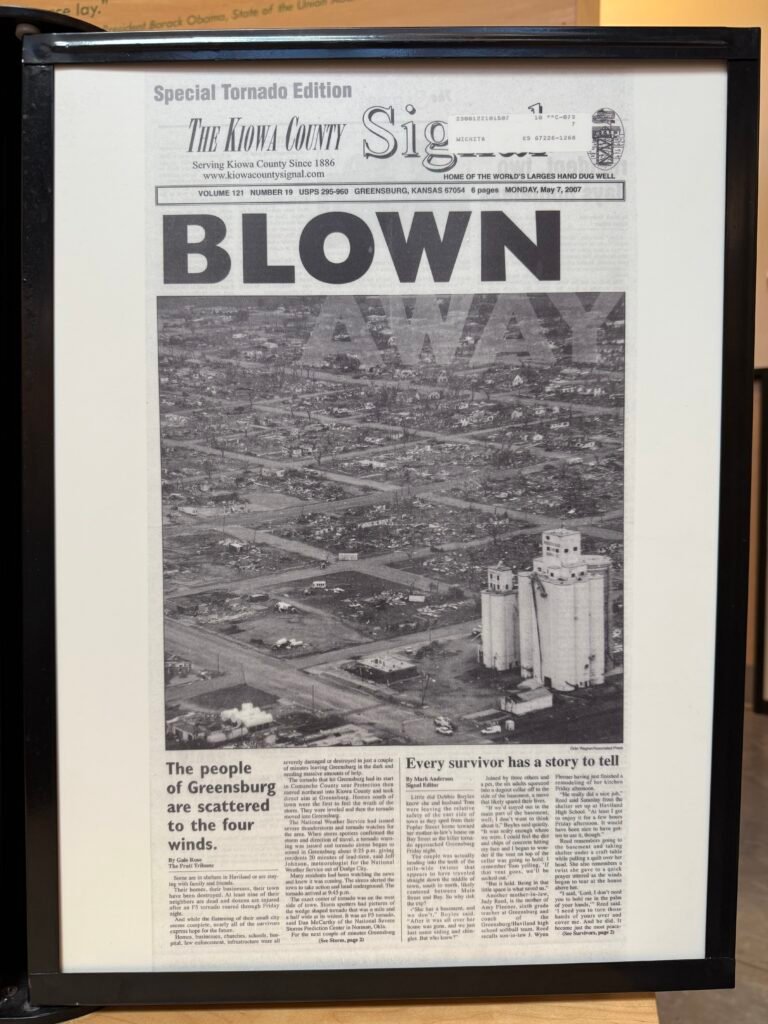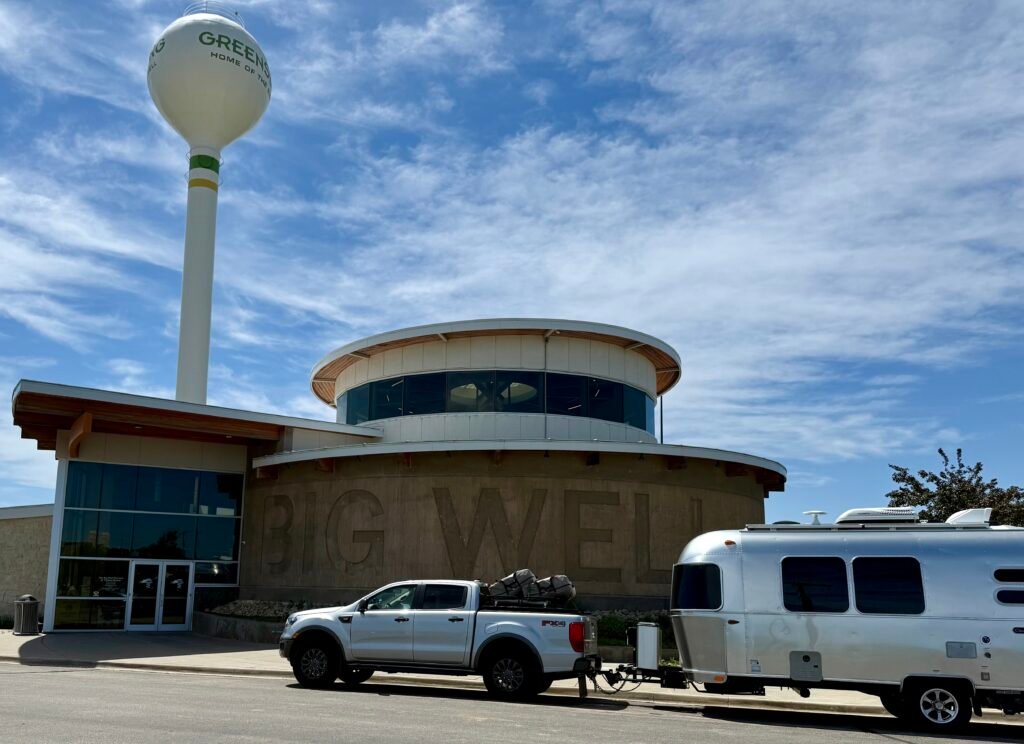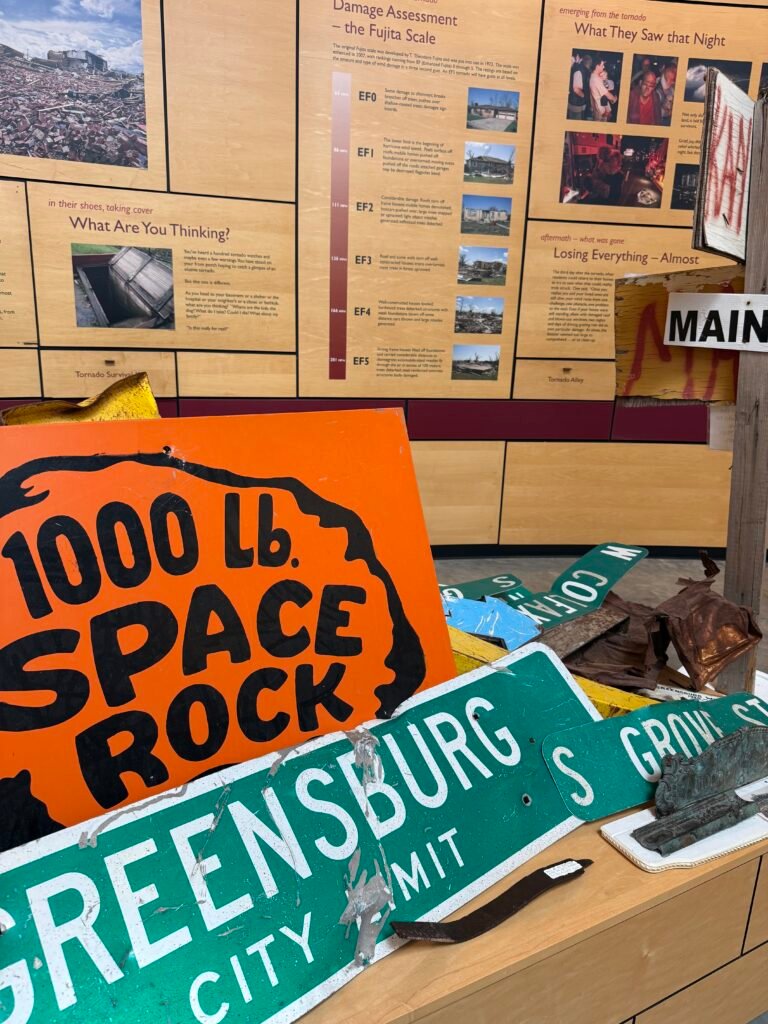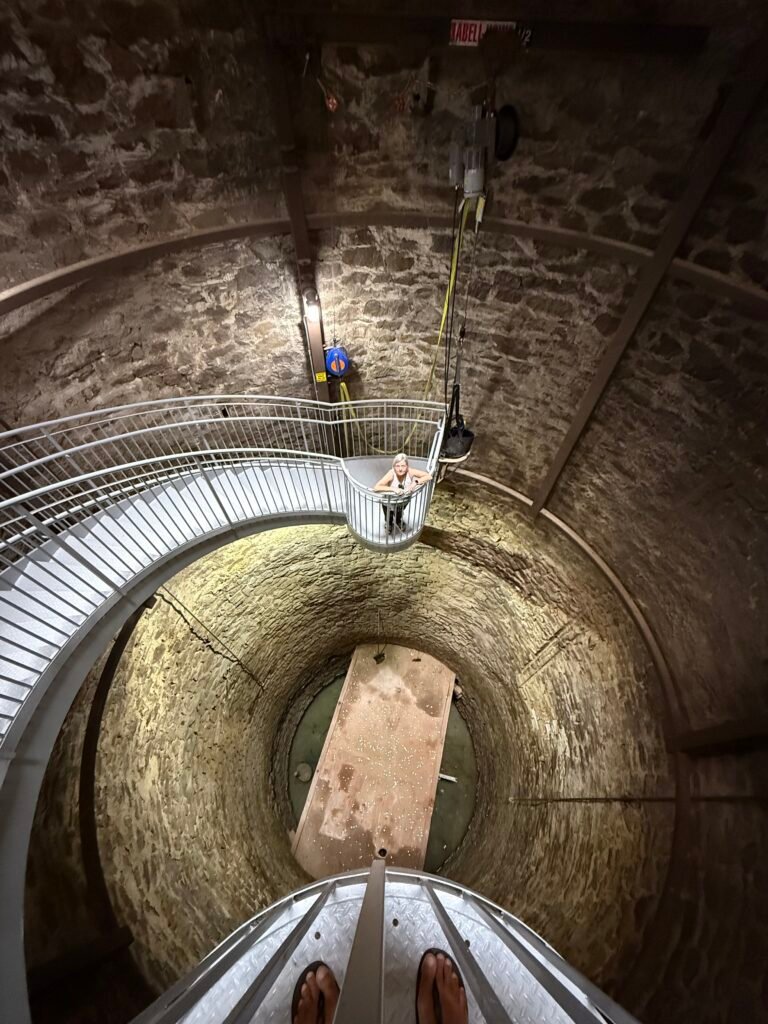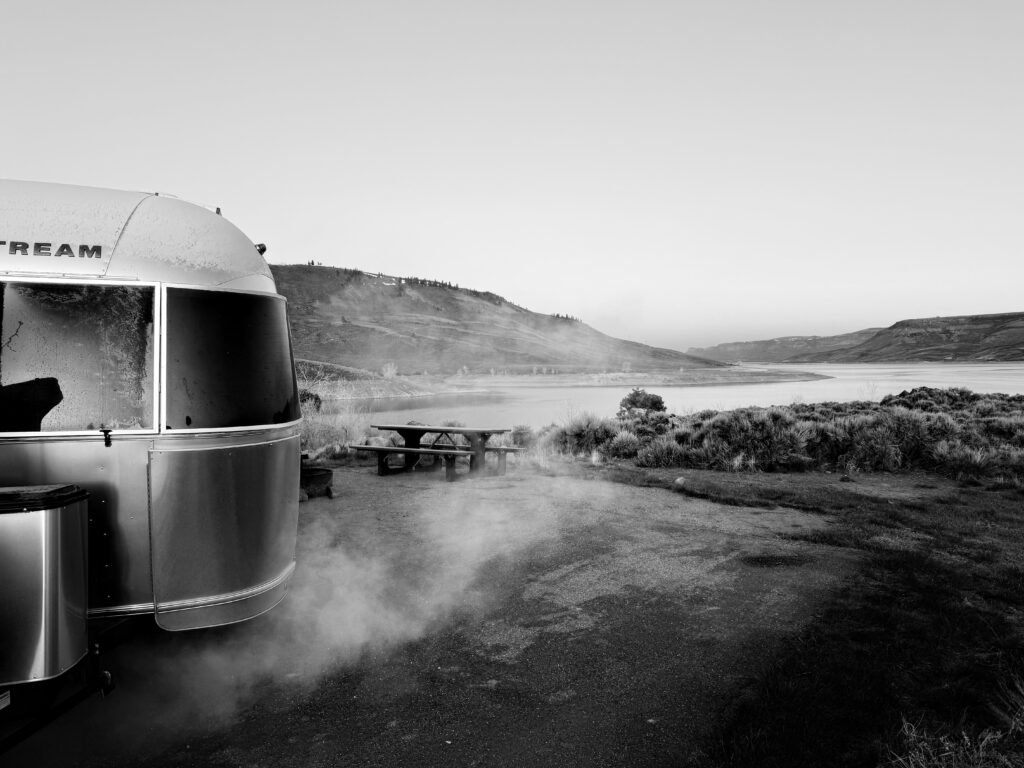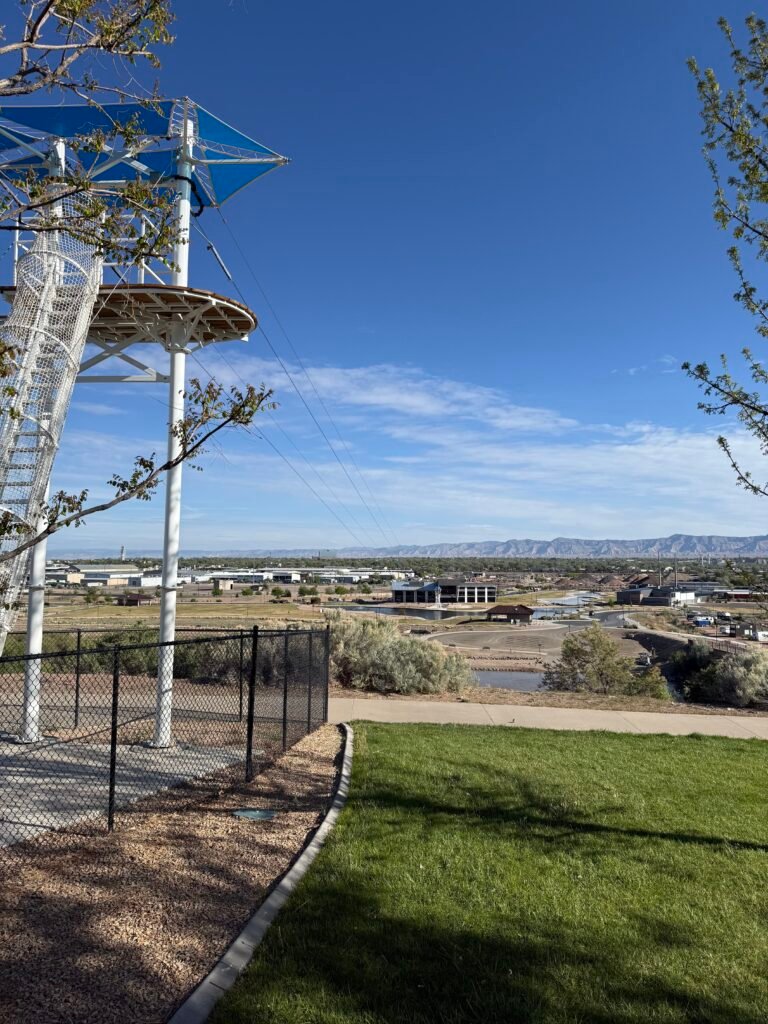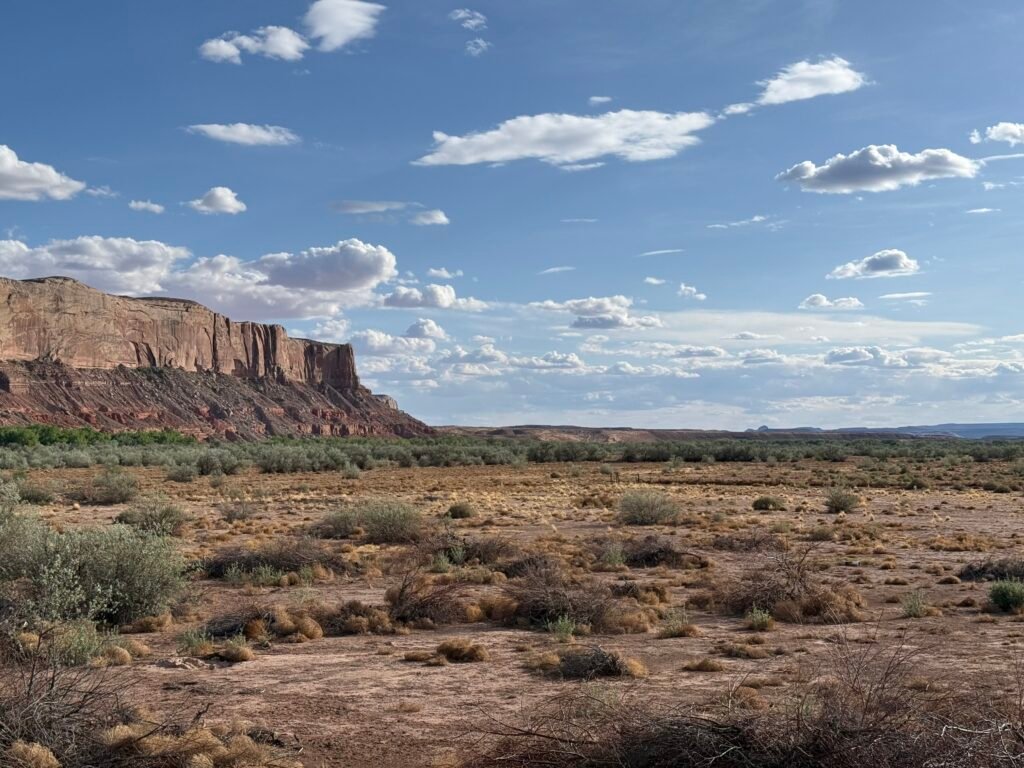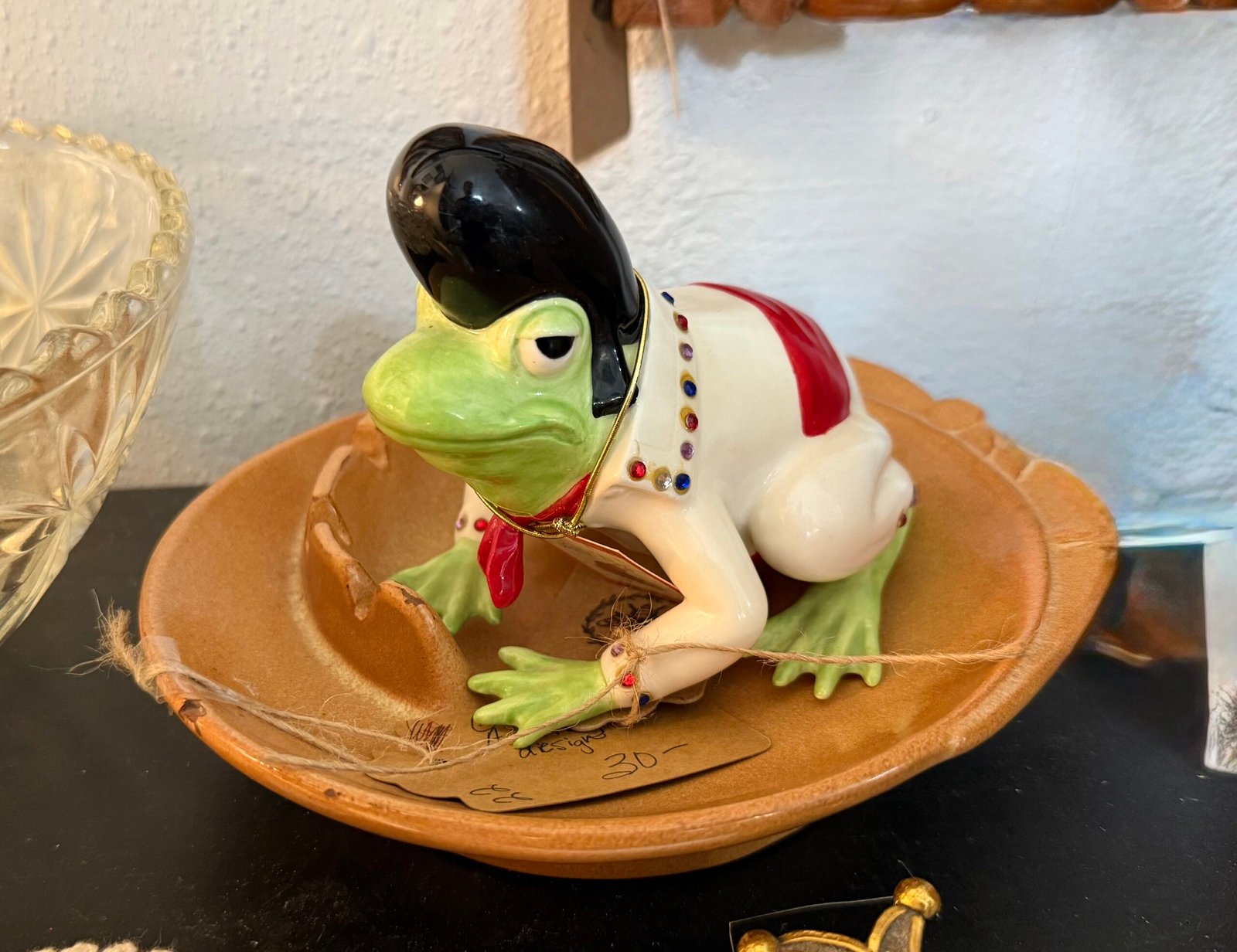#5 in the series.
There’s a thing that seems to happen on adventures of this type. To be sure, I don’t really know what “type” of adventure this is. All I know is that I have certain expectations or ideas about what it will be…and it never is. My logical mind sorts out the logistics, formulates an itinerary, and assumes an adventure of sights to see and things to do. But all it takes is a passionate local to alter the course toward more spiritual things of place and purpose. It happened in Belize with the Actun Tunichil Muknal (ATM) cave tour a few years ago and then again in Peru, on our 17-day odyssey. Is it happening here? Maybe too early to tell.
While I think we all understand that visiting unprotected, ancient sites requires due diligence on our part to not damage, deface, or loot anything there. Even though that seems like a no-brainer, there are people with brains that can’t get a grip on that, and we all lose because of it.
But as we walked through some of the Visit With Respect guidance, I began to realize it’s more, and it requires a different way of thinking. These sites are from an ancient people, going back an estimated 14,000 years. And many of the descendants that are spread around the southwest consider this area their homeland. Their home place. It’s almost as if you were to have tourists come to your grandma’s house poking around to see how she made her quilts or washed her clothes. And many of the places are sacred, akin to a cemetery or a church. This throws a little extra depth on it. My brother-in-law Tom always says “Why would you not?” The phrase has become a “decider” of sorts in our household. It adds just a little bit of push to something we might be wavering on. Why would you not, out of respect, approach these places as a home?
The talk and music last night was performed by Edward Kabotie, a Hopi Tewa. His presentation was excellent, and he discussed the resilience of the Hopi and the concept of “mythical archaeology,” where you allow the old stories to help inform the logical science of archaeology. Maybe not unlike Christianity.
I was struck that one of his favorite quotes was from J.R.R. Tolkien:
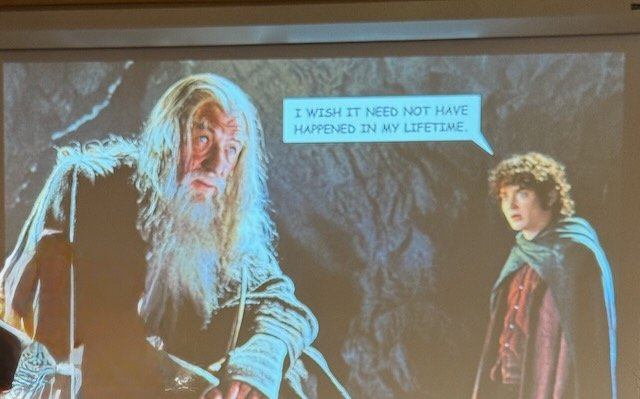
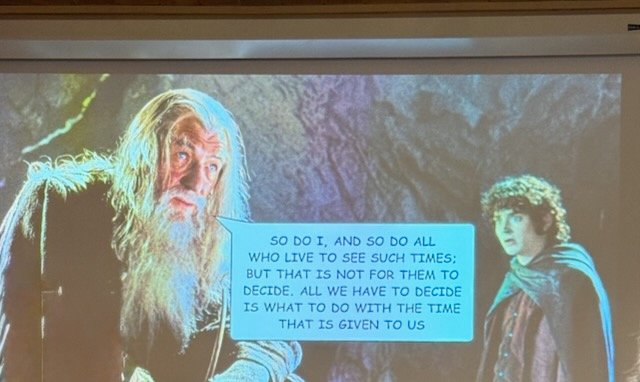
There’s no doubt that the Pueblo and Tribes have endured a lot. But they have decided what to do with the time that they have been given. And it’s the reason Bears Ears exists. They approached the government for help for their homelands. It remains to be seen if the government reneges yet again.
For the past couple of days, we’ve explored the western edge of the monument. A trip to Goosenecks State Park revealed some stunning scenery and a wonderful place to dry camp under the stars. The Goosenecks are considered by geologists to be the best example of “entrenched meanders” in the world.
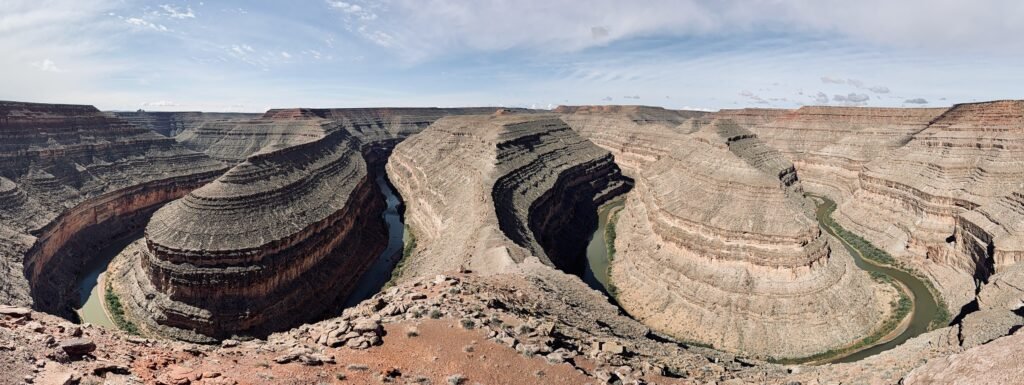

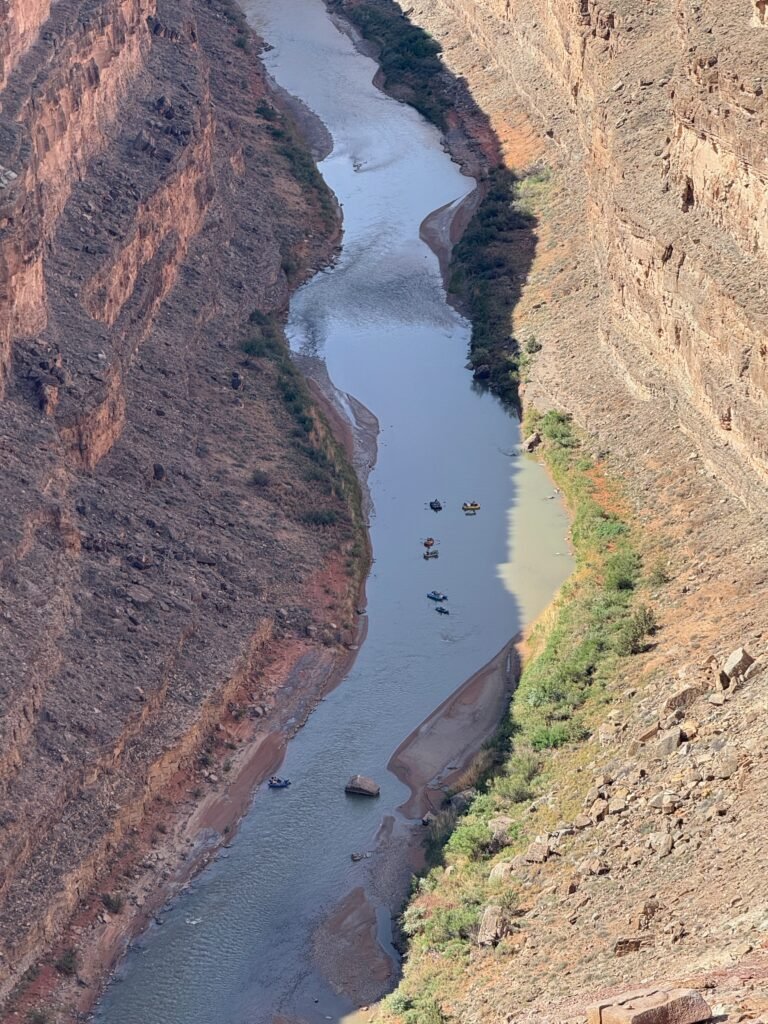
We looped through Valley of the Gods on 17 miles of rough dirt/rock road. And we were amazed to see so many big camp rigs in there. Three Airstreams! I mean, I could, but why would I? I’d run out of rivets!
And a shout out to Larry and Charlotte, this pop up had all the view and privacy you could ever dream of!
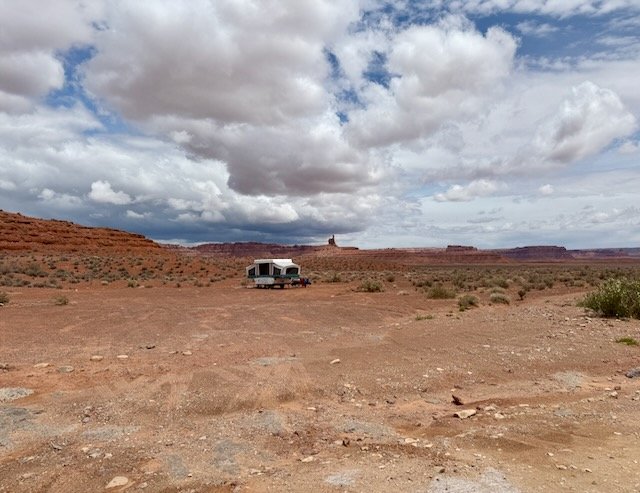
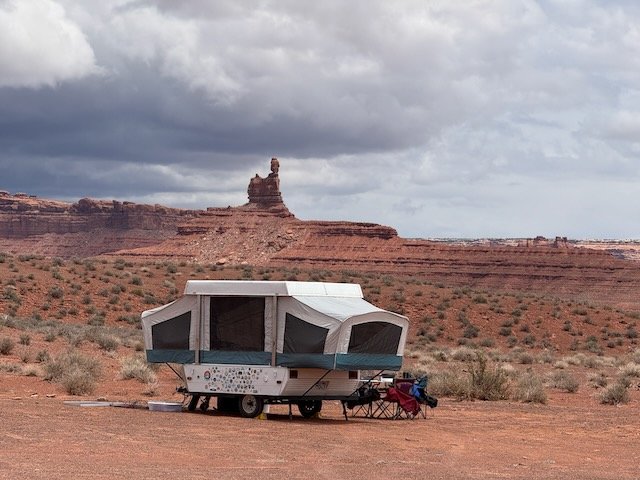
Valley of the Gods is like a smaller version of Monument Valley…without the crowds. It’s a wonderful place and well worth the visit.
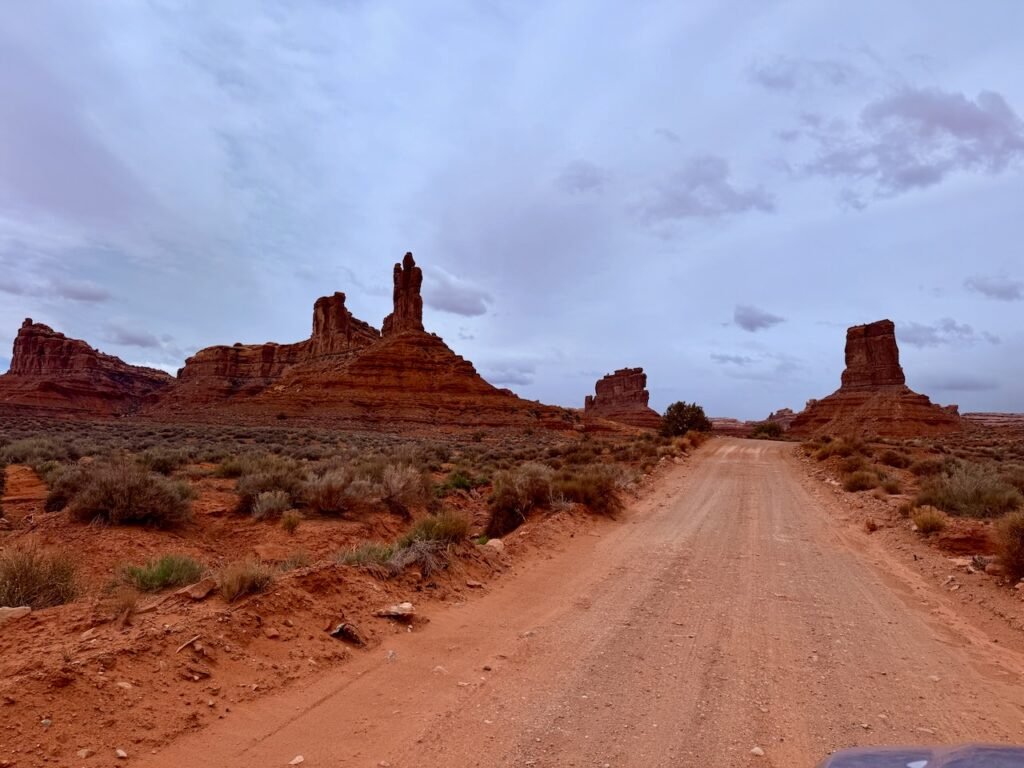
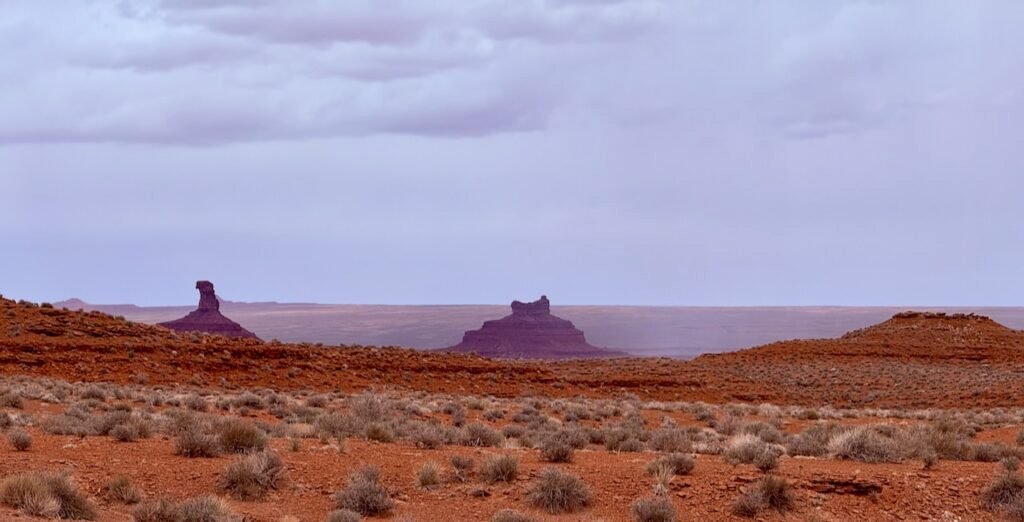

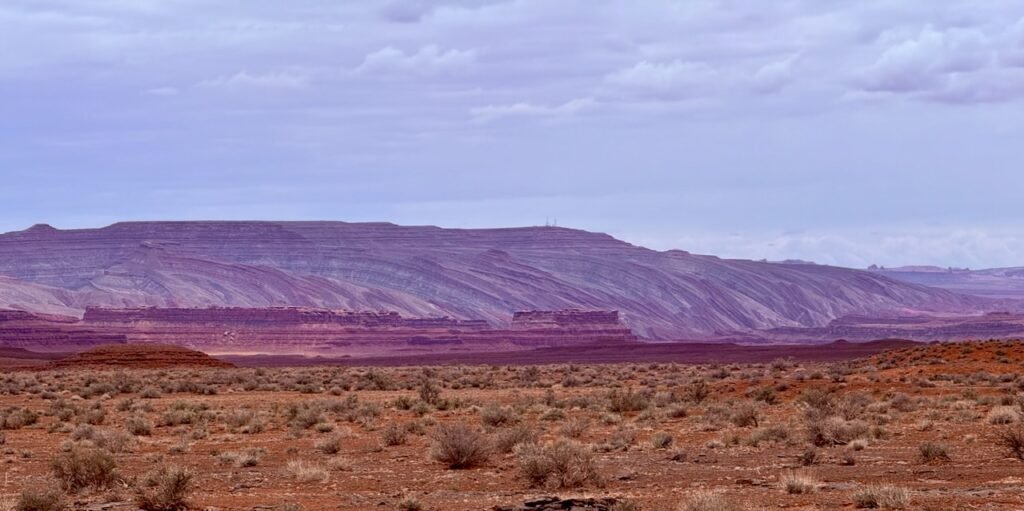
On our way to Natural Bridges, all of Utah 261 is nicely paved except for the little section known as the Moki Dugway. In the 1950s, the Texas Zinc mining company constructed it to transport uranium ore from the Fry Canyon mines to a processing mill near Mexican Hat. “Moki” is Spanish and refers to something being dug into the rock. And the dugway is literally carved into the bluff, ascending 1200 feet to the top of Cedar Mesa.
With the recent rains, there was a bit of repair in progress. I imagine this happens on a regular basis.

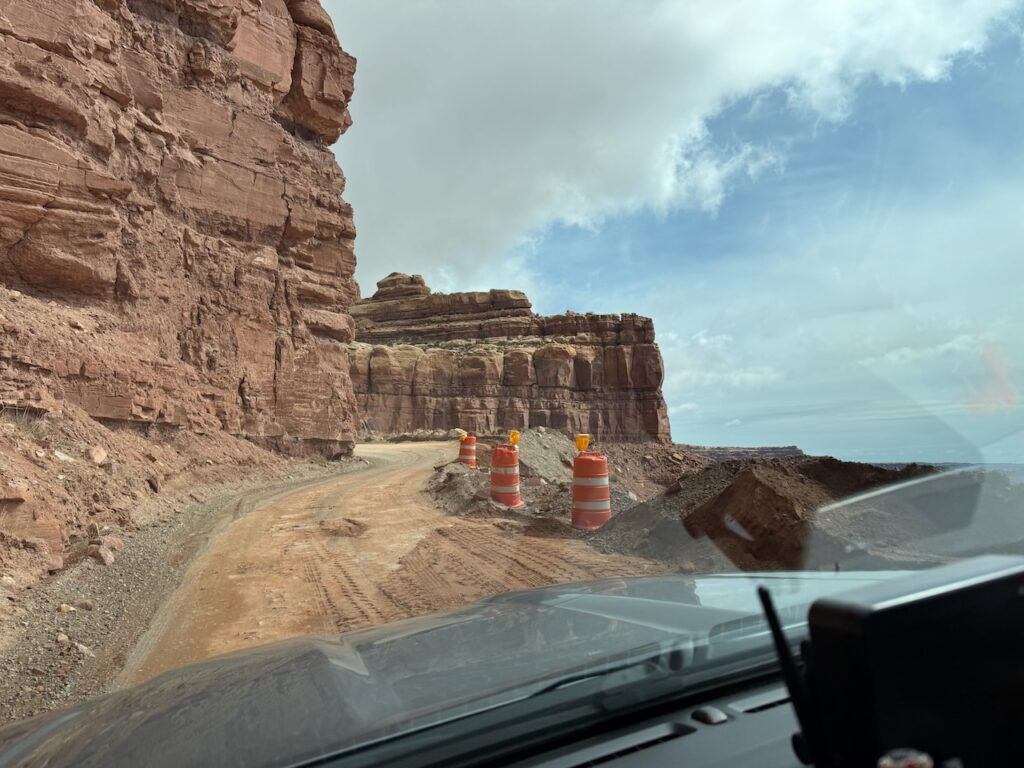
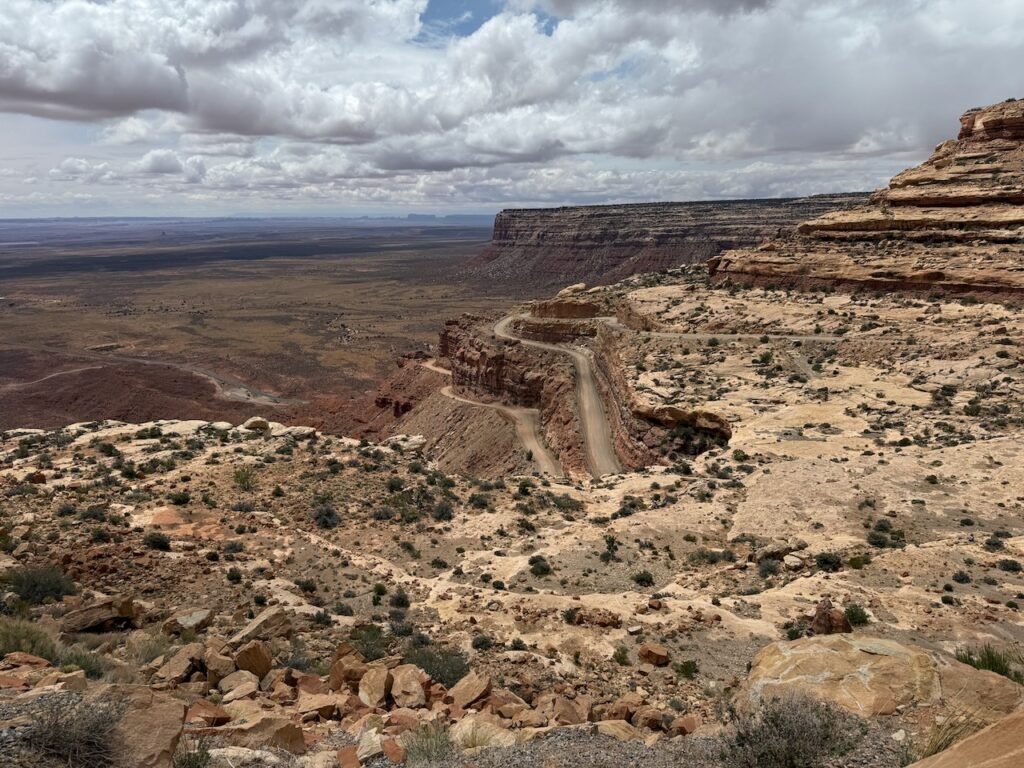
We stopped at Muley Point and it was a surprise! I guess I didn’t realize the view was into the Glen Canyon area and that the canyons were going to be so deep. Another fine place to hang out or camp under the stars.
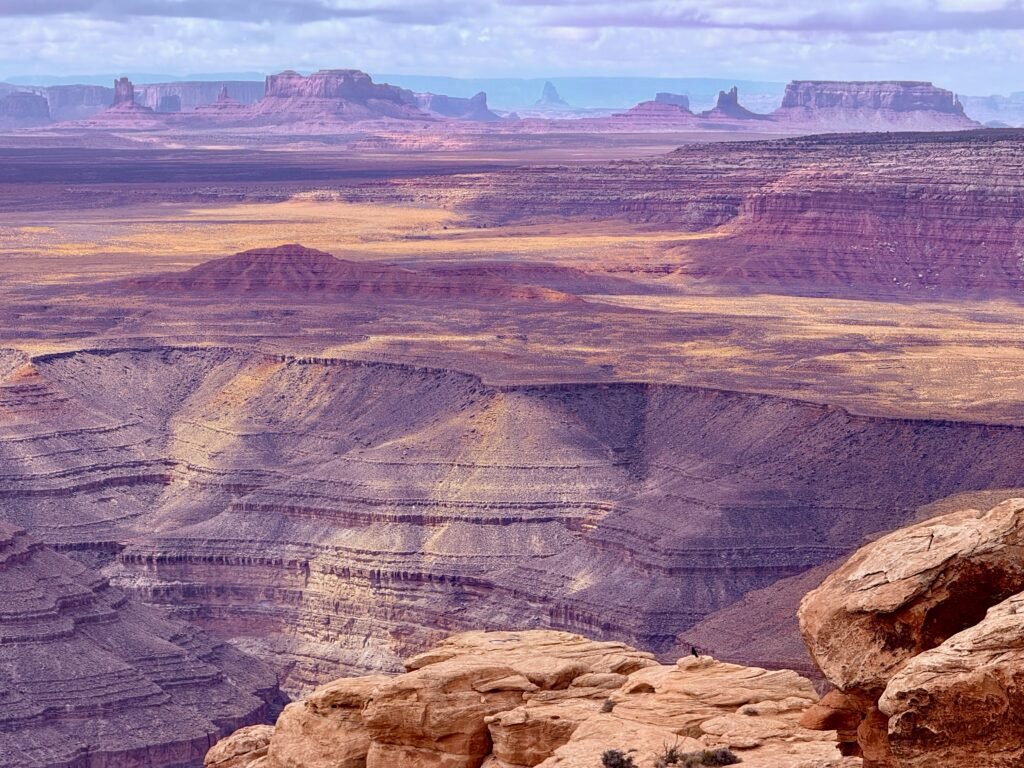

We rolled on along the top of Cedar Mesa. It averages over 6,000 feet in elevation and has a lot of open range grazing. It’s a land of pinyon, juniper, cactus, cattle, and cowboys. Mind how you go…
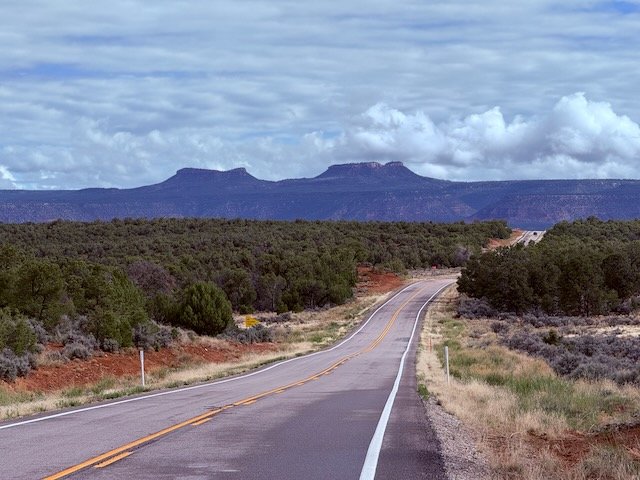
Natural Bridges National Monument is a monument within a monument. For now it’s surrounded by the newer Bears Ears and was originally protected by President Theodore Roosevelt in 1908. There’s a first-class visitors center and a nice little campground if you have a rig with a combined length of 26 feet. Perfect for camper vans and tent camping setups but too short for us.
The loop road provides access to three massive arches and a trail system. We chose a 6.5 mile loop starting at the Sipapu Bridge parking lot area. The trail dropped 500 feet down into White Canyon and wandered along the creek to Kachina Bridge. A beautiful hike, and the spring rains were bringing the flowers out.
The bridges are first formed as entrenched meanders like Goosenecks that I described earlier. The stream first cuts down into the petrified sand and becomes trapped in its own banks. Over time, big flows grind away the rock “middle” on both sides until it is breached. This becomes the new stream course and the original bow is abandoned. One day the San Juan may cut through the Goosenecks in just the same way and form an awesome bridge.
You can use the slider to see what I mean.
The hike down White Canyon was so peaceful. Water was burbling in the creek bed from recent rains, and wildflowers were popping out everywhere. So much different than the exposed slickrock on top.
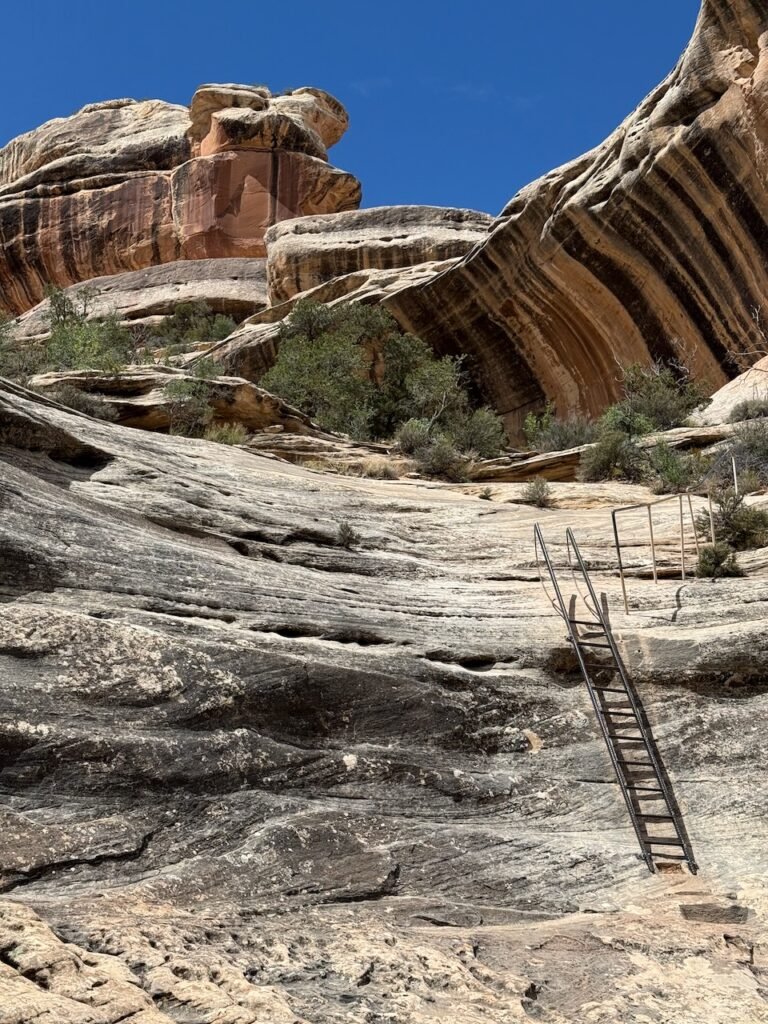
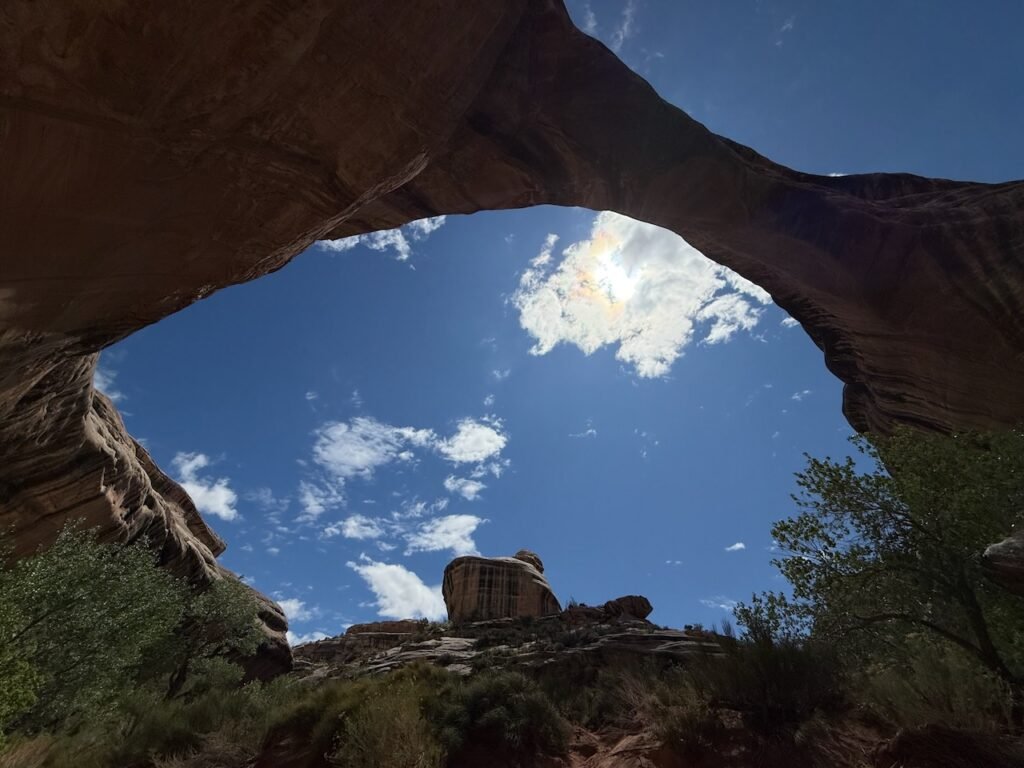


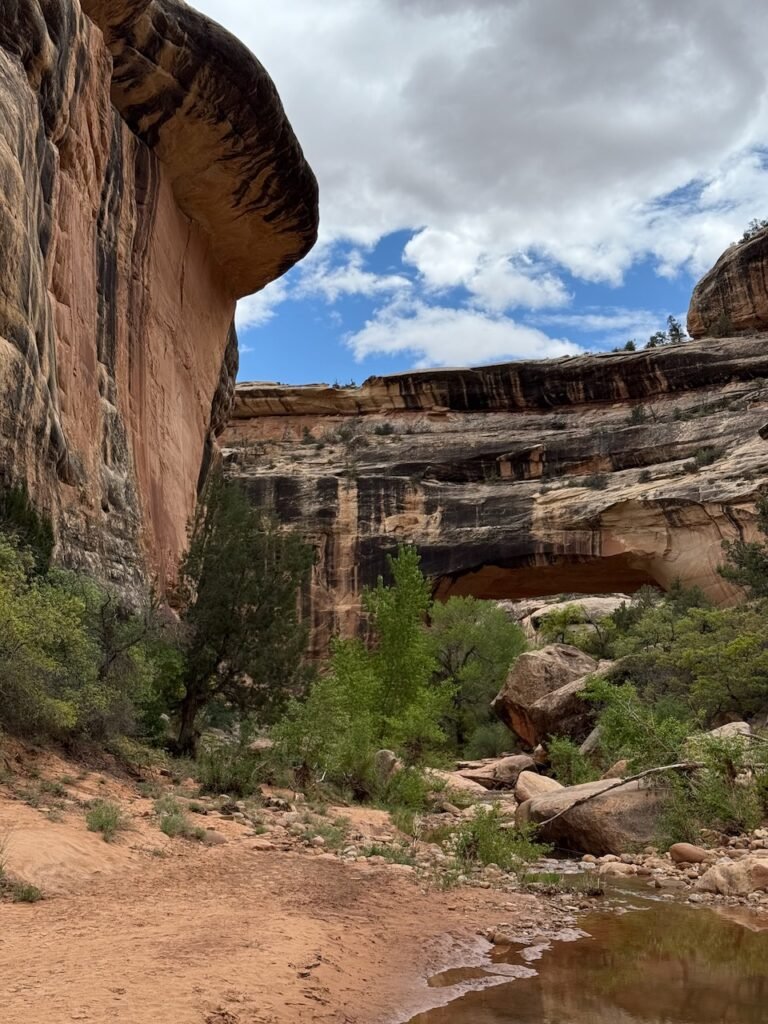
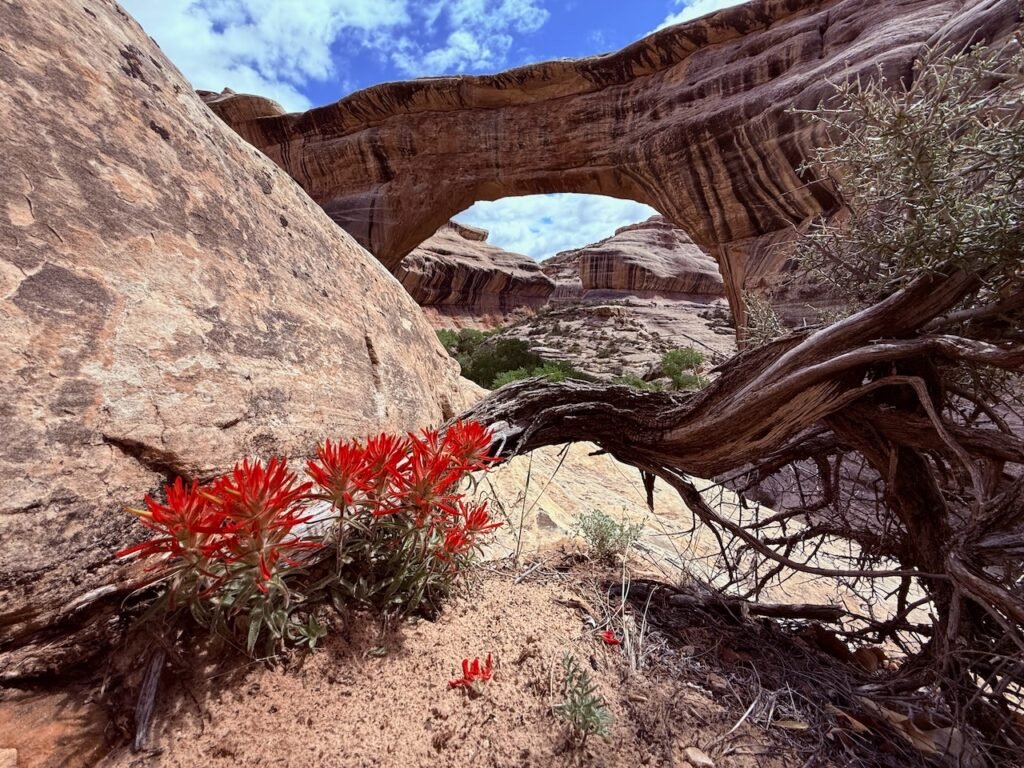
We made Kachina Bridge and found the ruins, what a treat! And we rounded out the walk by hiking the loop back to the truck.
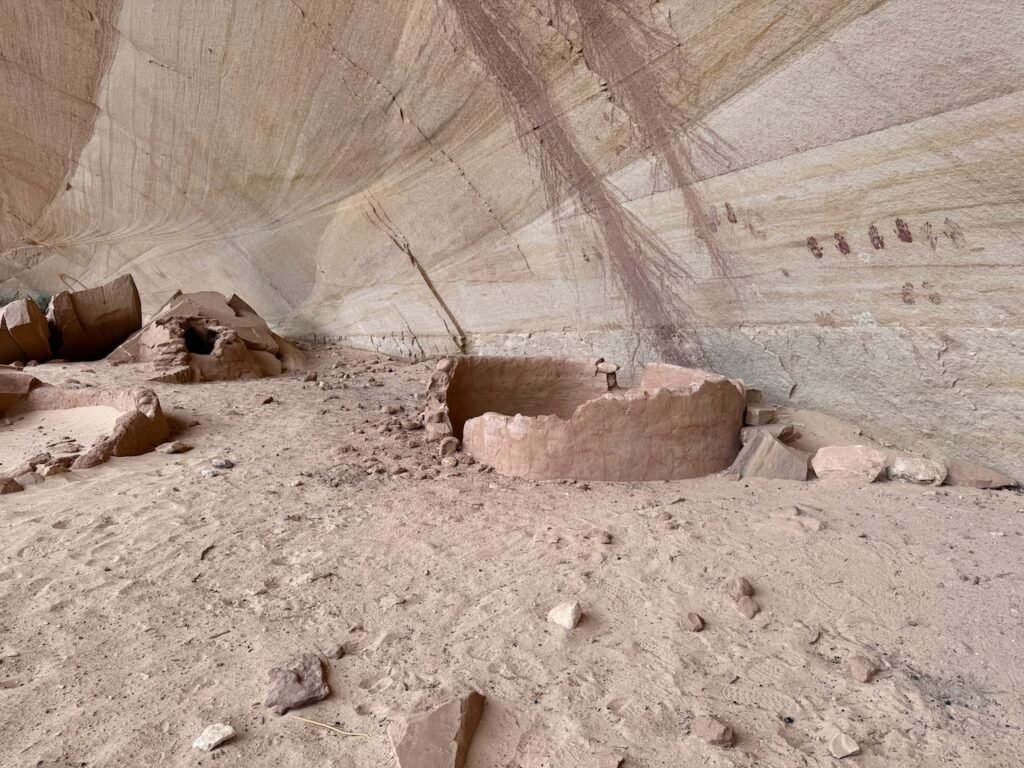
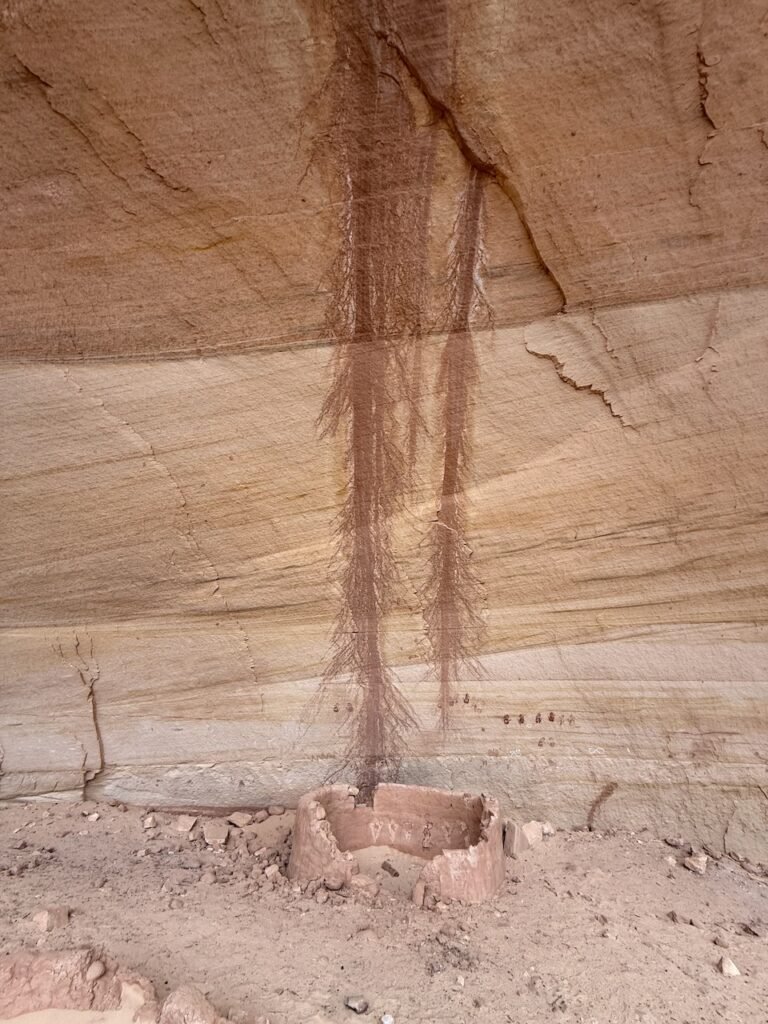
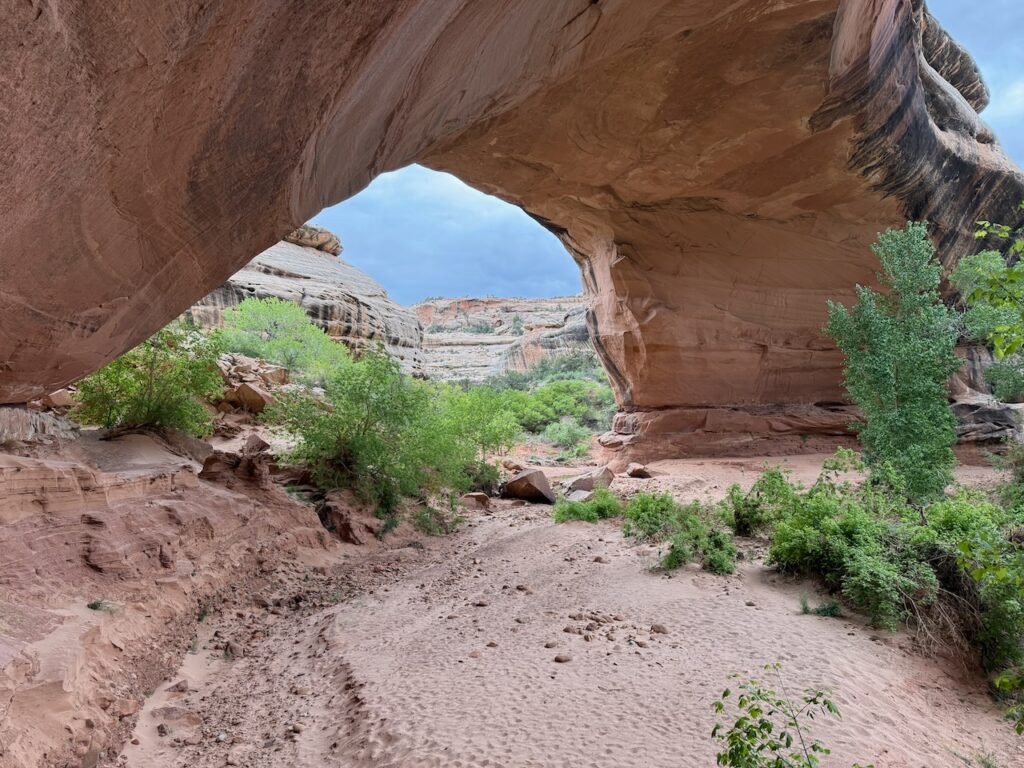
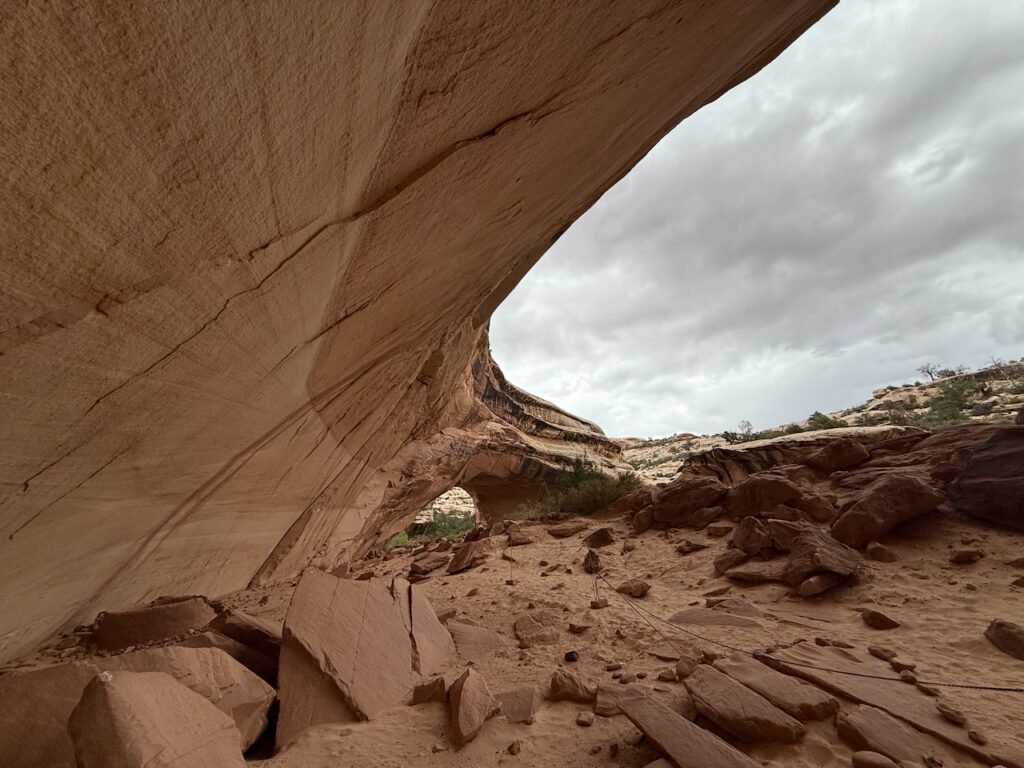
Before we did our last, short hike to Owachomo Bridge we stopped at Horsecollar Ruin overlook. We had walked right under it in the canyon without seeing it! I love these places.

A long day but a fine day.

Tomorrow we start our first full work week. We plan to shift to some of the many shorter, afternoon hikes around Comb Ridge.
